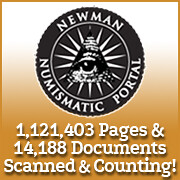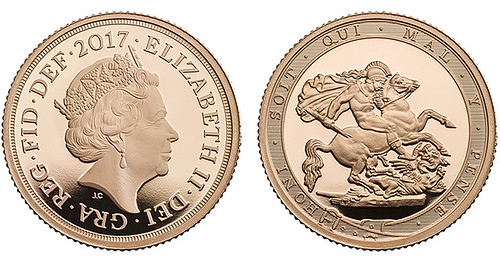
About UsThe Numismatic Bibliomania Society is a non-profit organization devoted to the study and enjoyment of numismatic literature. For more information please see our web site at coinbooks.org SubscriptionsThose wishing to become new E-Sylum subscribers (or wishing to Unsubscribe) can go to the following web page link MembershipThere is a membership application available on the web site Membership Application To join, print the application and return it with your check to the address printed on the application. Print/Digital membership is $40 to addresses in the U.S., and $60 elsewhere. A digital-only membership is available for $25. For those without web access, write to: Terry White, Treasurer AsylumFor Asylum mailing address changes and other membership questions, contact Terry at this email address: terrywhite5475@yahoo.com SubmissionsTo submit items for publication in The E-Sylum, just Reply to this message, or write to the Editor at this address: whomren@gmail.com
BUY THE BOOK BEFORE THE COIN |
- WAYNE'S WORDS: THE E-SYLUM July 5, 2017
- KOLBE & FANNING SALE 146 CLOSES JULY 15, 2017
- ANS 2017 SUMMER BOOK SALE
- JOHN SPRING (1934-2017)
- CONTEMPORARY 1792 MINT ACT PUBLICATION DIGITIZED
- MERCHANT'S MAGAZINE NOW ON NEWMAN PORTAL
- MORE ON THE HELFENSTEIN SALE PHOTO
- NOTES FROM E-SYLUM READERS: July 5, 2017
- MORE ON THE MORMON DESERET ALPHABET
- VOCABULARY TERM: FORMULATION
- AUGUSTUS CHARLES GRUHLKE (1850-1935)
- MAJOR GENERAL BROWN'S DAVIS FLIGHT MEDAL
- 1896 ARGENTUM UNIVERSALE ONE TALENT LOCATED
- ARTICLE HIGHLIGHTS HISTORIC COIN PRESS NO. 1
- REGINA COIN SHOW TO FEATURE ARCTIC MEDAL
- NUMISMATIC NUGGETS: July 5, 2017
- ANCIENT ARCHITECTURE THROUGH COINAGE
- METAL DETECTORISTS AND ARCHAEOLOGISTS
- CANADA'S LOON DOLLAR TURNS THIRTY
- 1775 LOUIS XV CANADIAN INDIAN PEACE MEDAL
- ROYAL MINT COMMEMORATES PISTRUCCI'S 1817 DESIGN
- ‘UNA AND THE LION' PROOF SET OFFERED
- SIGMUND FREUD IN NUMISMATICS
- QUEEN VICTORIA'S DIAMOND JUBILEE MEDAL
- ROYAL MINT BUYS RARE COIN DEALERSHIP STAKE
- DE LA RUE CREATIVE DIRECTOR JULIAN PAYNE
- LOCAL CURRENCY NAMED FOR COUNTERFEITER FARINET
- VICTORIA'S SECRET TURNS TABLES ON COUNTERFEITERS
- "GOOD LUCK" COIN TOSS DELAYS FLIGHT FIVE HOURS
- FEATURED WEB SITE: USPATTERNS.COM
Click here to access the complete archive
To comment or submit articles, reply to whomren@gmail.com
Content presented in The E-Sylum is not necessarily researched or independently fact-checked, and views expressed do not necessarily represent those of the Numismatic Bibliomania Society.
WAYNE'S WORDS: THE E-SYLUM July 5, 2017
I've been on the road with my family this weekend, and I'm publishing this from New York City. I wasn't able to include everything that was sent to me this week, but I hope to catch up on my backlog over the next week or so.
This week we open with a new numismatic literature sale from Kolbe & Fanning, a summer book sale from the ANS, remembrances of author John Spring, and new additions to the Newman Numismatic Portal.
Other topics this week include the Helfenstein large cent photo, Davis Flight medals, the Universale Argentum coinage proposal, the Arctic medal, ancient architecture on coinage, Una and the Lion, and a local currency named for a counterfeiter.
To learn more about ancient coin auction catalogues, the 1792 Mint Act, Coin Press No. 1, the 1972 Munich Olympics gold medal, Mafeking Siege notes, the Ideal Beverage, the Museum of Counterfeit Money, and the Loonie on Ice, read on. Have a great week, everyone!
Wayne Homren
Editor, The E-Sylum
KOLBE & FANNING SALE 146 CLOSES JULY 15, 2017
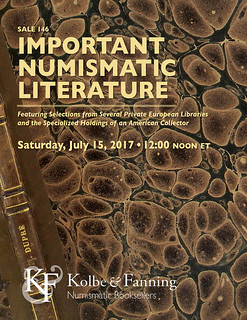 KOLBE & FANNING ANNOUNCE JULY 15 AUCTION OF NUMISMATIC BOOKS
KOLBE & FANNING ANNOUNCE JULY 15 AUCTION OF NUMISMATIC BOOKS
Kolbe & Fanning Numismatic Booksellers have announced that our Sale 146 will be held on July 15, 2017. The 400-lot sale features selections from several private European libraries and the specialized holdings of an American collector, and covers ancient, foreign and U.S. numismatics.
Some highlights of the sale include:
Lot 2: Alföldi's Caesar in 44 v. Chr. (Band 2, with 156 plates)
Lot 41: an original 1857 copy of Cohen's Description générale des monnaies de la République Romaine
Lot 53: a 1754-55 folio catalogue of Maria Theresa's Roman portrait coins
Lot 179: an exceptional volume of pamphlets by Augustin Dupré regarding his role in French coinage, from the library of the author
Lot 211: Medina's 1919 volume on the colonial coins of Latin America
Lot 228: over 100 years of Royal Mint reports, spanning 1870 through 1986, with only a handful of exceptions
Lot 230: the first photographically illustrated Canadian numismatic work, Sandham's rare publication on the Prince of Wales medals
Lot 278: a complete set of numbered Barney Bluestone auction catalogues
Lot 324: Ted Naftzger's plated copy of Elder's Gschwend sale
Lot 364: a plated New York Coin & Stamp Company catalogue of the George Woodside collection, bound in one volume with other classic pattern sales from the library of Edgar H. Adams.
Bids may be placed via post, email, fax or phone, as well as online. Kolbe & Fanning is using Auction Mobility as our third-party online bidding platform. Auction Mobility is an app-based platform allowing users the ability to participate in the sale through phones, tablets and computers. To register for the sale, bidders must go to bid.numislit.com and sign up. Once you have set up an account, you may browse lots, place advance bids, or participate in the live sale online. Those wishing to participate on their devices can download the Kolbe & Fanning app through the Apple or Google Play Store.
The printed catalogue of Sale 146 has been mailed to active customers. A PDF of the printed catalogue has also been posted to our main website at numislit.com for those who prefer that format (the online catalogue may be truncated). Bids placed via post, email, fax or phone must be received by July 14, the day before the sale, in order for them to be processed. Advance absentee bids may also be placed online at bid.numislit.com; live internet bidding will be available during the sale itself through the same platform.
Kolbe & Fanning Numismatic Booksellers LLC is a licensed and bonded auction firm in the State of Ohio. For more information, please see the Kolbe & Fanning website at
numislit.com or email David Fanning at
df@numislit.com. To register for the sale, go to bid.numislit.com. We look forward to your participation.
Summer Book Sale Featuring Recent ANS Publications
From now until July 31st, purchase recent ANS titles for 50% off the retail price!
Wealth and Warfare: The Archaeology of Money in Ancient Syria, by Frédérique Duyrat
Now $100
Irritamenta: Numismatic Treasures of a Renaissance Collector, by John Cunnally
Now $100
The Banknotes of the Imperial Bank of Persia: An Analysis of a Complex System with Catalogue, by Michael Bonine
Now $50
Art of Devastation: Medallic Art and Posters of the Great War, edited by Patricia Phagan and Peter van Alfen
Now $50
American Journal of Numismatics, Vol. 28 (2016)
$37.50
Order online via the links above, or by phone at 212.571.4470 x117.
George Kolbe writes:
In 2009, the results of many years of studious
research resulted in publication of Ancient Coin
Auction Catalogues, 1880–1980. It is a master-work.
In addition to listing virtually every significant auction
sale catalogue with photographic illustrations of
ancient coins, it features delightful histories of the
many venerable coin firms that produced them. Sadly,
over recent decades, virtually all of these firms have
closed their doors or survive in name only.
Some Europeans may not fully comprehend the
comparison and some Americans may not fully
appreciate the importance of the subject matter but
John Spring was a worthy successor to Emmanuel
Joseph Attinelli. He will be sorely missed.
Charlie Davis writes:
It was with great sadness that I learned of John Spring's passing. He was the consummate gentleman, quite rare I am afraid in this business. His knowledge of classic European catalogues was remarkable and is reflected in his detailed work "Ancient Coin Auction Catalogues 1880-1980" published by Spink. I looked forward to seeing him in London each trip, chatting about dealers with whom he was one of the last links, and buying Ars Classica, Jacob Hirsch, Bruder Egger etc catalogues in the most extraordinary condition. He will be very much missed.
John passed away on 26 June in a hospice, not far from his home in central
London - Cancer had been diagnosed a few months ago, and he will be
remembered for his cheerfulness, generosity of spirit, reliability, and basic
good-heartedness.
For many years to come the numismatic world will be grateful to him for his
remarkable and indispensable - I don't use these adjectives lightly - Ancient
Coin Auction Catalogues 1880-1980, published in 2009 (Reviewed by Alan
Walker in Schweizerische Numismatische Rundschau 89, 2010, pp. 277-280).
Over the years, I got to know John very well indeed, and more especially in
more recent times when he started to deal in numismatic literature. He had
previously collected coins, and slowly these were replaced by the literature of
the subject, especially the sales catalogues.
He became increasingly fascinated by the personalities behind the collections
sold at auction - the collectors, the dealers and the auction houses. During his
visits to Spinks in the 1980s and 1990, we would discuss the famous collectors
of the past, named and unnamed. With his computer-processing background -
his first job in 1960 was with IBM, as a systems' analyst - he started to organise
the information, and to form an important collection of illustrated sales
catalogues. This work resulted in his major Bibliography, and on and off, it took
John almost 30 years.
John didn't like to fly - I am not sure he ever did fly - and he travelled all over
Europe by train, often with his bicycle on board. He rented left-luggage lockers
in railway stations all over the Continent, where he deposited boxes of books
ready to be hauled to coin fairs for sale; he worked hard at this for a number of
years, and he loved every minute of the time he spent doing it.
He had one bad
experience in France – at gunpoint police arrested him for a short time on a
train, for “smuggling”- apparently for not “declaring” duty-free books…. and
put him off the train… imagine him sitting on the station in the middle of
France, surrounded with his books and not much else. I don't think he ever
forgave the French police, and I am not sure if he ever travelled through France
again by train.
John and I attended many of the well-known auctions of numismatic libraries -
often he would spend days viewing lots, and adding to his ever-increasing
database: the M & M (Basle) sales of the 1980s; the Werkner library sale Spink
Taisei, (1993) and the Sotheby sale of the Furstenberg library, (1982) both sold
in Zurich. Just the remnants, but still a massive library, of the famous Dutch
dealership, Jacques Schulman, was sold in Frankfurt/Main in 1995. The
enormous Rollin and Feuardent library, the Kampmann (Maison Platt), and the
Etienne Page libraries were all sold in Paris between the years 1989-2003. John
was at all these sales – in his element, and loving the thrill of auctions and the
socialising, often with people he had corresponded with and previously not met.
John Bergman attended one such sale, and George Kolbe was at almost all of
these noted.
He would usually stay in the cheapest possible hotel - or hostel - that he could
find, and would delight in inviting a few of us to a back-street restaurant (often
at a hike of a couple of miles) he had found where the food was fantastic, but
the price less than a third of what you might expect to pay. An additional
“game” that John liked to play- searching out the cheapest of places.
Domenico Rossi's sale of his huge collection of auction catalogues, and Marco
Olivari's impressive library were sold in Pavia in 2003-2005. I had been offered
the Rossi collection en bloc - but I think John was relieved when I told him I
wasn't able to buy it, since he would then have missed the fun of an auction and
the socialising….!
One of the most impressive libraries to have be sold at auction was that of
Munzen und Medaillen AG, Basle, Kunker, Osnabruck, in 2005. I think John
viewed the sales catalogues in that library for more than a week prior to the sale
- the library stayed in Basle, whilst the auction was held in Osnabruck.
Perhaps the most memorable of such sales was the auction of the remaining
part, but still huge - nearly 3000 lots sold over 3 very long days - of the Adolph
Hess library sold by Peus in Frankfurt/Main in 1991. In his inimitable way, after
the sale, John listed ALL the attendees at the auction. In room 1 he named the
30 or so “German speakers” – in room 2, there were 25 or so “English
speakers”, and in room 3, there were 4 or 5 “others”….. Peus conducted the
whole sale simultaneously in German and English, and in French and Italian
when required.
A few months ago, John presented me with his own annotated sale room copy
of the catalogue of the Hess library sale - falling to pieces – and said: “… you
had better have this, since you're the only person who will understand what it is
all about!”.
Contemporary Publication of the Mint Act of 1792 on the Newman Portal
The National Gazette was a Philadelphia newspaper published by Philip Freneau from October 1791 to October 1793. Highly political, the Gazette was firmly in the Republican camp, opposing the Federalist policies of Hamilton and others. Freneau was enticed to move to Philadelphia through Secretary of State Thomas Jefferson, who conveniently granted Freneau a post in the State Department. Jefferson was of course staunchly anti-Federalist and apparently comfortable with the obvious conflict of interest. The conflation of politics and the press is by no means a modern phenomenon!
Signed by Washington on April 2, the text of the Mint Act of 1792 appeared in the Gazette on April 12. Although widely published, there is something about an original copy that better conveys the historicity of the moment. After faltering starts dating back to the 1770s, America finally had its own Mint and the promise of a coinage that would serve as a sign of American independence and economic influence.
Note, this is oversized document – to facilitate reading on the Newman Portal, use the full-screen option (icon at bottom right of the NNP viewer), then the magnifying glass icons at the top right of the full-screen display, along with the scroll bars to the right and bottom of the full-screen document viewer.
Link to National Gazette, 4/12/1792, on Newman Portal:
Link to demo video on using the Newman Portal document viewer:
https://archive.org/details/NNPViewerDemo
“Since our last, the New Mint Bill has become a law, and will be published in our next number. Its provisions give general satisfaction, particularly the redaction of the weight of our silver coin, which will tend to relieve the present scarcity of small change. The reduction applies only to half dollars, quarter dollars, dimes, and half dimes, and is equal to 6.91 per cent…..Had more than this been taken from the intrinsic value of the coin, imitators might have supplied the change from private mints, and thus have defrauded government of the profits of the new coinage.” (Merchant's Magazine, vol. 28, p. 344.)
Link to Merchant's Magazine on Newman Portal:
Link to advanced search page on Newman Portal:
I produced a total of 15 - 8" by 10" photos of my negative and it illustrates the entire 1798 cent on the right and much more of the bracket on the left. If you still have photo #11 that I sent you in May of 1994, you can see the wider margins. The September, 1964 issue of Coins Magazine has the Merkin photo of the Helfenstein Sale on the cover. It appears to be taken from the soft cover Merkin sale catalog as the Hardcover catalog has a cropped photo that mostly hides the 1798 cent on the right and bracket on the left.
Additionally, I made 3 giant poster sized prints 24" by 30" from my negative. One was sold at the 1992 ANA at the NBS meeting for the benefit of the NBS. One was sold in 2008 at the ANS Gala for the benefit of the ANS. I retained one of the giant prints for my collection.
For more information, or to order, see:
To read the earlier E-Sylum article, see:
Central States Offers Author Grants Harvey Stack on the ANA Edition of The E-Sylum
I believe the addition of the members of the ANA will give greater insight to the importance and need for more numismatic knowledge. Your weekly publication of news will provide constant instruction that coin collecting has depth and deep study that only the more advanced collector generally sees.
The E-Sylum is a great source of information
towards the continuous advancement of numismatics.
I remember when The Numismatist was the main source of information; later Numismatic Scrapbook joined the monthly distribution of news, and when the introduction of Numismatic News and Coin World on a weekly basis joined the information train, I feel that all together they
helped make the ANA and the hobby grow.
Later of course came to the market other numismatic magazines and then the electronic world led to the growth of the interest and knowledge about coins on virtually a daily basis. Of
course, your dedication to The E-Sylum which is a super
effort you've done virtually on a one man basis in charge of publication weekly, became the super source for literature and information to keep collectors aware what is happening in the hobby.
Best wishes on your new collaboration.
To read the earlier E-Sylum article, see:
Observations on Digital Scanning Resolution
Some observations:
In the 1930s Eastman Kodak promoted the Recordak camera that used 16 mm black and white film to record old newspapers and other material. Their promotions said that tons of old newspapers that were taking up space could now be tossed.
The result TODAY is that most historical newspapers are gone forever, and that the 16 mm images, widely available on various Internet sources, are in all instances fuzzy and never crisp.
Today, digital tech can solve that. Here are some basic rules:
1. Most printed material such as books and postcards if imaged at 300 dpi will be about as good as the originals. Lower dpi will result in fuzzy edges to the letters, etc. If you use 400 dpi, as I do, any later use will be 100% as sharp as the originals.
For bank notes and engravings, I use 800 dpi. This enables the most delicate engraving details to be captured perfectly.
Absent the above, any modern scans will be sub-par if anyone wants to reproduce them.
The New Hampshire Historical Society, of which I am a trustee, uses 700 dpi for everything, including tens of thousands of historical photographs. This insures that if any originals ever are lost, the digitized images are just as good.
Over the years I have had many inquiries from researchers, and the above advice/commentary has ALWAYS worked to the delight of everyone.
To read the earlier E-Sylum article, see:
Mike Hodder on the Sacred Heart Piece
To read the earlier E-Sylum article, see:
Memorial Coins Honor Kalamazoo Fire Chief
Jeff Starck writes:
The Kalamazoo Chapter of the Fraternal Order Of Leatherheads Society has honored the Fire Chief who was killed on duty earlier this year with a commemorative medal.
Too bad they don't show an image of the medal.
I love these stories of local medals with meaning.
The Kzoo F.O.O.L.S. organization is offering memorial coins to honor the memory of Chief Ed Switalski and pay tribute to the impact he had on the community.
The Comstock Township fire chief was hit and killed by a driver while responding to a crash on I-94 earlier this month.
The Kzoo F.O.O.L.S. designed a commemorative coin that can be purchased in person for $15 or shipped for $20. We're told 100% of the profits will go to the Comstock Firefighters Memorial Fund.
Kalamazoo resident Joel Orosz adds:
Thanks for mentioning this sad occurrence. The Chief was universally respected in the greater Kalamazoo area (Comstock is an eastern suburb of Kalamazoo). My poor hometown has suffered a lot in the past 18 months: a murderous rampage by a deranged Uber driver, a group of bicyclists mowed down by a badly impaired motorist, and now this. We are hoping for better things in the future.
To read the earlier E-Sylum article, see:
David Fanning of Gahanna, OH writes:
To read the earlier E-Sylum article, see:
Formulation.
Mixing of metals to form the exact alloy for a coinage composition. The procedure to prepare metal to be rolled into strip, blanked and struck into coins or medals consists of three steps: learning the exact composition of metal to be used, weighing the metal and adding to it the proper metal to meet the standards of the coinage alloy. The makeup of the melt must be the exact COMPOSITION for the intended coins. Medal compositions for bronze medals can be for more liberal (see Bronze chart).Preparing the proper composition is done by weight to make the ALLOY the correct percent of each metal.
Metal arrives at mints in many forms: melted coins, salvaged metal, virgin metal, BULLION ingots from various suppliers. Precious metal is tested (ASSAYED) to ascertain its composition and purity, then weighted and mixed with other metal before being melted together. Coinage laws spell out the STANDARD of silver compositions. It is seldom that a pure metal is ever used for coins (aluminum being an exception, but even this is often alloyed with manganese). Pure metal seldom has the wearing qualities required for a circulating coin.
Typically, gold and silver is alloyed with copper. Nickel (being very hard to strike in pure state) is also alloyed with copper to form copper nickel. For a bronze composition, copper is alloyed with zinc (formerly with tin and zinc). Thus most all coinage compositions are alloys. Formulation is the mixing of the metal – in pure state or already alloyed – to reach the required combination of metal components.
As an example, when Great Britain was on the STERLING standard of .925 silver, the formula was 37 fortieths of silver to copper. Nine parts of copper had to be added to 111 parts of silver to make the proper coin composition of .925.
Salvaged metal can be in many forms. A large quantity is SKELETON SCRAP
from blanking (long strips cabbaged into a size for melting in furnaces). This is ideal since it is already of proper formula. But scrap or salvaged metal can be in sheet, bar, tube, wire, pellet or any fabricated form.
Brass shell casings from World War II were salvaged for American bronze
coinage metal in the years following that war. Likewise cannons have provided salvaged metal after previous wars. (The Paris Mint made note of salvaged Russian iron canons make into several of their coining presses.)
Silver has been scraped from tableware, receptacles and silver objects of all kinds.
Coinage silver, as another example, was made from melted firemen's horns from the Diligent Fire Engine Company #10 at the Philadelphia Mint in 1871 according to numismatic writer Walter Breen. Thus the source or physical form of metal is immaterial.
All scrap metal must be tested for purity, the function of assaying for precious metals, then formulated into the standard composition required for coinage strip to be used by a mint for coins. Such a strict metal standard is generally not a requirement for medals, typically struck in bronze or silver. Thus medals can be struck in bronze of most any formulation (see BRONZE chart) or silver of prescribed fineness from commercial metal suppliers.
After formulation (in a mint's melt shop), the alloyed mixture, called a charge, is melted in furnaces, agitated into one homogeneous mass. It is treated with flux, then poured into ingot molds and allowed to cool. The bullion at this point may have physical imperfections, however a chemical imperfection – an inhomogenous mixture – is serious, as it may continue to exist throughout rolling, blanking and even in struck pieces.
Incorrectly formulated bullion alloy is called BULLION BLUNDER. This occurs when an incorrect amount of metal was added during the makeup of the melt. Other than a possible discoloration of alloy, this anomaly is usually not evident but may only be determined by LABORATORY TESTING. Also the several metals may not have blended correctly to form a homogeneous alloy. See INHOMOGENEITY.
Reference: NC8 {1988} Breen.
Looking for the meaning of a numismatic word, or the description of a term? Try the Newman Numismatic Portal's Numismatic Dictionary at:
https://nnp.wustl.edu/library/dictionary
Note. Not all entries in An Encyclopedia of Coin and Medal Technology will have illustrations, in fact, over 400 terms do not require illustrations. We are seeking photos which are ideal examples of the term explained.
Check out Newman Portal for the entire list of terms. They are in the Dictionary section along with two other dictionaries – Be sure you have an term from the Encyclopedia. If you think we should include it send the photo to
Dick.Johnson@snet.net. Hundreds needed.
Do you have an example of adjustment marks or flow marks? Send a photo.
This brief biographical sketch brings to light some details about Augustus Charles Gruhlke, a very important figure in American numismatic history and self-made millionaire. He was an established coin dealer at least a decade before the A.N.A. was founded. He was a charter member of the A.N.A. and held several offices. He established a very large coin collection and also others of curiosities, guns, and Indian relics. He was an inventor of many new and novel items and manufactured the first electric cigar lighter for which he was granted a patent in 1898. He was also a restauranteur, telephone lineman, electric company/public utility owner for the city of Waterloo, Indiana, a railway target man, real estate broker and investor, entrepreneur, and an Arch Mason. In 1901, he also invented a gasoline engine for an automobile that had a quarter horse power capacity. He was also a member of a seven man ocarina band. He had personal assets of about $1 million U
SD.
Augustus Charles Gruhlke (1850-1935), was born in Lobsens, Posen, Prussia-Germnay on March 6, 1850, the third of six sons (and three daughters) to Daniel Gruhlke (1810-1875), and Wilhelmina "Minnie" Tietz Gruhlke (1820-1901). His family moved to the United States of America in May 1859, settling in Pulaski County, Indiana on a farm.
In 1867, he left home and worked on farms as a farm hand day laborer.
In 1872 moved to Waterloo, Indiana, where he began working for the Lake Shore and Southern Michigan Railroad as a target man using the old lighted lantern targets at the railroad crossing.
On November 12, 1879, he married Almira "Myra" W. Wheeler (1855-1924), a native of New York at Buffalo, New York. Her parents lived on a boat on the St. Lawrence River. They had no issue. He and his wife ran the restaurant though he continued as a target man for the railroad, and she also continued as a hairdresser and milliner. Searching through the coins at the railroad station and in his cash box at the restaurant Gruhlke was able to cherrypick old U. S. Coins for resale. His younger brother Albert and his wife also joined in the restaurant as partners.
In March 1883, he joined partnership with his brother Albert Gruhlke in publishing the Waterloo Globe, a local newspaper. They dissolved the partnership in the newspaper and restaurant the following March, 1884.
About 1886 he installed the first telephone wires in Waterloo, Indiana, which operated between his restaurant, the crossing tower, the freight house and downtown, in addition to several other points.
In January 1887 he was elected to the board of directors of the Waterloo Broom Manufacturing Company. The following month at a stockholders meeting he was elected Secretary.
In December 1891 he slipped on the ice and sustained a knee injury causing him to walk with a cane.
In April 1892 he was elected town clerk of Waterloo, Indiana.
Gruhlke was a charter member of the ANA and is listed as Member No. 49.
In November 1892, Dr. George Heath appointed Gruhlke together with Tatman and F. B. Stebbins to the Standing Rules Committee for the newly formed A. N. A.
In December 1892, he advertised in The Numismatist selling subscriptions to The American Archaeologist, a twenty-page monthly devoted to the interests of Indian relic collectors, published by the Archaeologist Publishing Company. It soon expanded to twenty-eight pages. The monthly journal was formed by Gruhlke, L. V. McWhorter, and J. R. Nissley as the official organ of the American Archaeologist Association. They sold shares of stock in the company and eventually they sold out to Professor Warren K. Moorehead, Ohio State University. Gruhlke owned a vast collection of 26,000 Indian relics, and was a very proficient amateur archaeologist.
In 1893, he was present at the first A.N. A. annual convention. He became the Superintendent of the Exchange Department of The Numismatist.
In 1895, he invented the electric cigar lighter. He formed a partnership with William Kessler in the firm of the Standard Manufacturing Company making the Standard Electric Cigar Lighter. Gruhlke sold out his interests in the firm to Kessler. He then opened a new firm, the Star Electric Company.
In 1896 he was the Secretary of the Waterloo City Lodge of Free and Arch Masons.
In 1897, he sold the restaurant and retired from the Railroad.
In September 1900 he sold 5,000 pieces of his extensive collection of Indian relics to Dr. Nelson Lloyd Deming (1868-1947), Fort Wayne, Indiana, for $1,200.
In January 1901 Gruhlke and his partner E. G. Flack were granted the franchise to open the electric company in Waterloo installing street lights and supplying electricity for the city.
In October 1903 he sold his interest in the Waterloo Cigar Company to F. C. Goodwin.
In 1908 he sold his interest in the Star Electric Company. He then opened a real estate brokerage in the firm of Gruhlke & Saltsman.
On September 15, 1911, he held a public auction selling a portion of his rare gun collection.
In 1912 he advertised selling a collection of 2,000 coins in the April issue of The Numismatist.
The 1930 U. S. Census lists him as the owner of a Vanity Store.
It was reported in his obituary that his vast collections of coins, Indian relics, and guns were sold prior to his death.
He died on April 30, 1935, and is buried in the Waterloo Cemetery, DeKalb County, Indiana.
To read the complete article, see:
A New Davis Flight Medal has surfaced! It's a rare treat when one of these coins appears - doubly so in this instance since it originates from a Confederate Major General and later Governor of Tennessee! As a brief update for readers who may not be familiar with these coins, they are mostly Mexican silver 8 Reales and US Silver Dollars from the Confederate Treasury – and the very few that are known were all subsequently engraved by the soldier that got them.
After General Lee's final defenses around Petersburg had been breached on April 1st, 1865 he advised President Davis that Richmond was no longer defensible and he should depart if he wished to avoid capture. Davis and some Cabinet members left Richmond on April 2nd and the Treasury departed shortly thereafter. I've labeled these engraved coins collectively as the “Davis Flight Medals” because their story is inescapably bound to the flight, pursuit, and capture of President Jefferson Davis.
A total of 11 Davis Flight Medals are presently known (including this specimen). The largest group is 7 (now 8) coins with engraved dates in late April/early May, 1865. When the Confederate Treasury passed through Greensboro, NC about April 9th, 1865, it left behind some $39,000 in silver coin which General Joseph Johnston used to pay his Confederate Army of Tennessee. Each man received about $1.15 and the payout process seemingly took from April 25th to May 1st, 1865. General Brown's coin below is engraved April 30th and would thus have been one of these.
John Calvin Brown (1827-1889) was a successful lawyer from Tennessee who opposed secession. During the 1860 presidential campaign he supported John Bell (Constitution Union party) who was neutral on the slavery issue and also opposed secession. After the bombardment of Ft Sumter in April 1861, however, secessionist sentiment prevailed in Middle Tennessee and Brown turned his support to the Confederacy. He joined the Confederate 3rd Tennessee Infantry as a private on May 1st, 1861, and some two weeks later he was elected Colonel of the regiment. He led them during the battle and surrender of Fort Donelson and was held as a prisoner of war until exchanged in August of 1862.
When he returned he was promoted to Brigadier General on August 30, 1862 and fought in General B. Bragg's 1862 through 1863 campaigns in Kentucky and Tennessee. Brown fought at Perryville (wounded), and Chickamauga, and his men were in the defensive line at Missionary Ridge.
In August, 1864, Brown was promoted to Major General and fought in the Atlanta Campaign commanding a division in General B. Cheatham's Corps. During General JB Hood's 1864 Tennessee campaign, Brown was severely wounded in November at the Battle of Franklin, where six of his fellow generals were killed. He was incapacitated for several months and was unable to rejoin the army until the end of the Carolinas Campaign in April 1865. General Brown surrendered with General JE Johnston's Confederate Army of Tennessee and was paroled a month later.
After the war, General JC Brown returned to Pulaski, Tennessee and resumed his law practice. In 1870 he served on the state constitutional convention tasked with overhauling the 1834 constitution to meet post-Civil War demands. The following year he ran for and was elected Governor of Tennessee and served from 1871 to 1875. In 1889 he became president of the Tennessee Coal, Iron and Railroad Company, at the time one of the largest industrial firms in the South. He fell ill that summer and died on August 17, 1889. General Brown's body was returned to Pulaski for internment.
Peter adds:
The Brown coin was brought to my attention by its owner, Mr. Craig Bowen. He had purchased a copy of my Confederate Numismatica book and sent me an email that he had a Davis Flight Medal! Imagine my excitement as I asked how we could get together, and would he permit me to photograph it and publish it? Long story short, we met up at the Dalton, GA show where I photographed the coin. I gathered that Mr Bowen had had the piece for a good while but I wasn't able to determine how he came to acquire it.
To read earlier E-Sylum articles, see:
In our March 5, 2017 issue I wrote:
I'm familiar with the 1886 Eutopia dollar and the 1897 Bickford dollars, but was unfamiliar with the 1896 talents mentioned in the previous article by Tom DeLorey. A search of The Numismatist archives provided a few hits.
May 1934, p336: "one Talent Argentum Universale, United States of America 1896"
March 1910, p85: "Mr. Woodin, as usual, had several rare patterns of the highest interest, among them a proof of the "United States 'Talent' " of 1896, bearing on obverse and reverse the opposing hemispheres of the globe, with "UNITED STATES OF AMERICA"
These are not listed in Adams-Woodin or Judd as official patterns of course, but I checked anyway. I did find two short listings in the 5th edition of Unusual World Coins, p545. The entries for 1/5 Talent (x# 1) and Talent (X# 2) are unillustrated and marked "reported, not confirmed."
So... can anyone point me to more information on these enigmatic pieces? Thanks. -Editor
Kenny adds:
My wife received the piece from her great grandfather which already had the wear marks on it. Although unfortunate it's still an awesome piece.
1896 Fifth Talent
1896 Fifth Talent, Judd-Unlisted, Krause X#1, Silver, Uncirculated Uncertified. 24.3 mm., 6.5 grams. Offered in the pattern section following the precedent set in the 1914 ANS Exhibition catalog, this privately-produced piece illustrates a proposal for a universal world-wide coinage in an alloy combining silver and gold. These pieces are known in two sizes, 37 mm. that is denominated "one talent" and 24 mm. that is denominated "one-fifth talent." The obverse depicts a map of the Eastern hemisphere with the legend ARGENTUM - UNIVERSALE and the date. The reverse depicts a map of the Western hemisphere with the legend UNITED STATES OF AMERICA and FIFTH TALENT. This lovely example is sharply struck and lustrous with original deep gold patina.
Our consignor provided a newspaper article dated July 7, 1896 from the Evening Sentinel of California. Mr. Emil Greeff, who appears in New York City Directories as an importer, is identified as the originator of these pieces that were described as "one part gold to four parts silver." The article notes:
He believes that the union of gold and silver in a single coin in a definite, unvarying proportion of weight and measure would solve the problem of a common money standard or measure of value. This coin could be used as a universal legal tender, with which all international debts could be liquidated.
To read the complete lot description, see:
1896 Fifth Talent, Judd-Unlisted
To read the earlier E-Sylum article, see:
Through the efforts of Carson City pioneer Abraham Curry, Congress authorized construction of a branch of the U.S. Mint in Carson City on March 3, 1863. For various reasons, construction and completion of the facility took another six years before the first coins of Comstock silver and gold could be struck.
Manufactured by Morgan and Orr in Philadelphia, the six-ton, steam-powered press arrived at the new Carson City Mint in 1869, the same year the Virginia and Truckee Railroad was completed to Virginia City. As was the custom of the day, the 12,000-pound press was painted with a large "1" to signify the first press located at this branch mint.
On Feb. 11, 1870, this press struck the first coin bearing the famous "CC" mintmark. This was a Seated Liberty silver dollar. In the years to follow, it would produce silver coins in the denominations of dime, 20-cent piece, quarters, half-dollars, silver dollars and trade dollars. It also produced gold coins in the denominations of five, 10 and 20 dollars. The mint was in production from 1870 to 1885 and again from 1889 to 1893.
In 1878, the press suffered a cracked arch, which was the massive steel casting that bore the stresses of the stamping process. Fortunately, the Virginia and Truckee Railroad shops just one block away had the equipment to cast a new arch and repair the machine. The machinists at the V&T shops were so proud of their handiwork, they removed the brass Morgan and Orr plate from the press and replaced it with one bearing the name of the Virginia and Truckee Railroad. This brass plate still adorns the press today.
The Carson City Mint ceased coining operations in 1893, and the presses were removed in 1899. Press No. 1 was taken to the Philadelphia mint, where it was remodeled in 1930 from steam power to operate with electric power. In 1945 it was transferred to the San Francisco Mint and renumbered "5" to correspond with its place in the coining department there. Finally, when all the coin production was temporarily halted at San Francisco in 1955, the old press was due to be scrapped.
Through the efforts of Judge Clark J. Guild and other local businessmen, the antique press was purchased by the state of Nevada for $225 and arrived back in Carson City in 1958. Then, in 1964, the nation faced a severe coin shortage. U.S. Mint director Eva Adams, who was also a Nevada native from Ely, requested the loan of the venerable old press. It was soon trucked to the Denver Colorado Mint and placed in operation, striking more than 188 million coins during the next three years.
With the Denver tour of duty completed, Press No. 1 again returned home to the Carson City Mint/Museum in 1967, where it was converted to a much slower electric drive. In 1976, it was used to strike the Nevada Bicentennial medals in gold, silver, copper and bronze. Hundreds of other metal tokens and medals have been produced at the museum on the old coin press. Carson City's old coin press No. 1 has the unique distinction of being used at four of the United States mints, Carson City, Philadelphia, San Francisco and Denver, producing hundreds of millions of coins.
After I discovered the hundreds of coin dies during construction of a park at the museum in 1999, some of the old dies were used to strike coin tokens complete with the cancellation marks cut into the dies. This was discontinued when some of the original iron dies developed cracks.
As you can see from this short narrative, Coin Press No. 1 is one of the most historic artifacts in the state of Nevada. If you would like to see the same Coin Press No. 1 that produced millions of Carson City coins from Comstock gold and silver, please stop by the Nevada State Museum in Carson City. This was the mint building in the 1800s. They also have a display of the coin dies I discovered and a collection of nearly every coin ever produced at the Carson City Mint.
To read the complete article, see:
Chronicles of the Comstock
Now, Dennis Cassinelli brings to life the varied and colorful stories of the past with his latest work, Chronicles of the Comstock. A compilation of historical articles originally published in The Comstock Chronicle, a weekly newspaper based in Virginia City, the book features topics as diverse as the great Virginia City fire of 1875, the discovery of a cache of rare coin dies at the former Carson City Mint and the exaggerative newsmen who recounted the daily digest of life on the Comstock.
395 pages
For more information, or to order, see:
To read earlier E-Sylum articles, see:
The Regina Coin Club Show in October 2017 will feature an extremely rare H.M.S. Terror medal, issued in 1836.
The H.M.S. Terror was a bomb vessel built in Britain during the War of 1812 and participated in the war against the Americans. During the war, its claim to fame included bombarding Fort McHenry, an attack that inspired Francis Scott Key to pen a poem that later became “The Star-Spangled Banner,” the American national anthem.
In 1836, H.M.S. Terror was refitted for Arctic exploration under the command of Captain George Back. The purpose of the mission was to explore areas of the Canadian Arctic that had not yet been charted by other explorers in their quest to find the North West Passage.
The mission was partly successful as the crew was able to map new areas in the Arctic. Unfortunately, the ship spent much of 1836 and 1837 stuck in ice. The ice did so much damage that the ship was taking on more water than the pumps could pump out. H.M.S. Terror barely was able to limp back from her voyage and was run aground in Ireland because the ship was about to sink.
During the voyage, the H.M.S. Terror met several groups of Eskimos who wanted to trade.
Captain Back's account of the expedition “Narrative of an Expedition in H.M.S. Terror Undertaken with a View to Geographical Discovery on the Arctic Shores, in the Years 1836-7,” includes the following: “Four noisy natives of the Esquimaux race had the hardihood to venture through much difficult drift ice to the ship, from whence, however, they returned amply rewarded, and the richest of their tribe. Some of the presents, supplied for that purpose by government, were given to them, together with a few brass medals, having the ship's name on one side, and a figure of Britannia on the other.”
In the 1840s, H.M.S. Terror and H.M.S. Erebus set off on Sir John Franklin's expedition to finally discover the route of the North West Passage. Both ships became stuck in thick ice, were abandoned by their crews and later sank. Both crews died from starvation, exposure or cannibalism.
The location of the sunken ships remained a mystery until September 2014 when the Erabus was discovered, followed by the discovery of Terror in 2016.
Both ships are now being used to support Canada's claim of sovereignty over much of the Arctic. Both ships were discovered in Terror Bay off King William Island where they remain to this day as a National Historic Site of Canada.
The Regina Coin Club is honoured to display this historically significant medal (the finest known of the three or four medals known to exist). The anonymous collector who lent us the medal calls it “a national treasure.”
The Regina Coin Club Show and Sale takes place at the Turvey Centre from October 21-22, 2017.
For more information about the Regina Coin Club, see:
1900 Mafeking Siege Note and Voucher
Mafeking Siege 10s banknote and 2s voucher, 10s with folds otherwise fine, 2s creased, toned and backed on paper
To read the complete lot description, see:
Circa 1900 Dr. Pepper Good-For Token
1.5" made of aluminum. Text on one side is "Good For A Drink Of Dr. Pepper At Any Fountain Dispensing Same/The Dr. Pepper Co. Dallas, Texas." This side has a small bit of slightly darker tarnish showing in certain reflective light angles. Opposite side is without this tarnish and reads "Drink Dr. Pepper The Ideal Beverage/Healthful-Refreshing/All Fountains 5¢". Fine-VF.
To read the complete lot description, see:
1972 Munich Olympics Gold Medal
Cased Gold First Place Winner's Medal Awarded for Swimming, 400m metre individual medley event. Medal is gold-plated over silver or silver gilt, diameter 66mm, thickness 4.2 mm and weight 175 grams, showing event name “Schwimmen 400m lagen Herren” and winner “Larsson Gunnar” engraved on the edge, plus gold plated chain, all presented in plastic presentation case lined with velvet and gold coloured edging showing Olympic logo,, designed by Gerhard Marcks and Giuseppe Cassioli
To read the complete lot description, see:
To read a related earlier E-Sylum article, see:
The reconstruction of ancient buildings is often a difficult undertaking in a world where most ancient structures either no longer exist or have been heavily modified. However, a massive online coinage database with over 600,000 objects and a new book on ancient “architectural coinage” demonstrate that coins provide an abstract view of the buildings of antiquity which deserve more attention.
The American Numismatic Society's database of coinage (called MANTIS) has over a half million objects in it. As the society notes, “These include coins, paper money, tokens, ‘primitive' money, medals and decorations, from all parts of the world, and all periods in which such objects have been produced.” You can search this database according to time period, mint, ruler, or a host of other categories. A newly launched image identifier for the coins of the Roman empire, called OCRE “Identify a Coin”, even helps students, teachers and non-specialists to identify a coin simply by image–and provides a great tool for novice numismatists.
Additionally, you can access the entire database through an interactive map that allows you to explore where each object was likely minted. The ANS often supplies large color photographs of each piece of coinage along with this metadata. The citation information within the database entries is also linked to dozens of other digital projects that provide secure information about the ancient world; a digital humanities citation approach called Linked Ancient World Data (LAWD).
Beyond just exploring this massive database, the holdings of ANS provide the foundation for a number of studies of ancient and modern coinage. A new book on the subject of “architectural coinage” published by the ANS presents a number of stunning buildings often depicted on the reverse side of Roman coinage. Written by Nathan T. Elkins, the monograph examines how we can go beyond coinage as a means of reconstructing ancient buildings that may no longer exist, and begin to appreciate this numismatic evidence as a way of accessing how Romans and their rulers may have felt about architecture generally. Elkins reveals how coinage could be used as propaganda by rulers, as a means of propping up their ideological programs and as a way of celebrating certain Roman ideals.
To read the complete lot description, see:
In September, Mr. Wille drove from his home here to the Mashantucket Pequot Museum and Research Center with several boxes of objects — the highlights of his recent collecting. The museum — a vast, glassy structure that looks like an airport terminal, complete with a 185-foot-tall traffic-control-style tower — is a testament to the years when the Foxwoods Resort Casino made the Pequots the wealthiest tribe in the nation. Although those fortunes have declined, the Pequots are still financing projects by the archaeologist Kevin McBride, who works full time on what Lori A. Potter, a spokeswoman for the Mashantucket Pequot Nation, called “history that's written by the conquered and not by the conqueror.”
Inside the museum, Mr. Wille unpacked his boxes, displaying items discovered around the Pequots' homeland: George Washington inaugural buttons, musket and cannon balls, a gold ring, commemorative spoons, a 100-year-old military insignia and the triangle of brass.
Dr. McBride, the museum's director of research, and David J. Naumec, its senior historian, inspected the lot, but were most curious about the crude brass triangle. They knew it was a kettle point, an arrowhead fashioned from a piece of a brass trade kettle (which resembles a pail) — an archaeological signature of the 17th century.
The two scientists were finishing a seven-year project documenting the Pequot War of 1637, especially the running battle the English fought as they retreated to their ship, after massacring the Pequots at Mistick Fort.
Many archaeologists consider metal detectorists looters who shouldn't be allowed anywhere near their labs or dig sites, but Dr. McBride has a different view.
“It's a real ongoing debate in the profession,” he said. “To what extent do we embrace hobbyists or amateurs? You're not going to stop them so … join them.”
The scientists then reached out to local metal detecting clubs and formed an unconventional alliance with several detectorists, deputizing a few citizen-scientists who already spend free time looking for what archaeologists want. With so many significant Pequot war-era sites still undiscovered, the relationship has begun to produce results.
Mr. Wille may have discovered “the first forced resettlement” of a native people, Dr. McBride said. The site predates Mashantucket, the first Native American reservation that was established in 1666, where the Pequot museum now sits.
If this spot had not been found until now, and it took a metal detectorist to find it, Mr. Wille asked: Would it sway the negative opinion that other archaeologists have of metal detectorists?
“No,” Dr. McBride said, but added: “We've done modeling. You can dig forever and not find the stuff you found in, what, a couple of hours?”
“I found the kettle point the first time I was here,” Mr. Wille said. “I probably spent two hours.”
Dr. McBride says there is a “better than even” chance that Mr. Wille discovered the site of Tatuppequauog, one of the villages mentioned in the 1638 letter. The letter said it had 20 houses; Dr. McBride estimated that about 200 people might have lived there, a large enough village to account for the distance between where the adze and kettle point were found.
If it is Tatuppequauog, Mr. Wille would be listed as the discoverer. While he displayed little emotion that afternoon during the search, afterward he was ecstatic that his pasttime might contribute to history. “You become a part of something bigger than filling your cabinet with musket balls and belt buckles,” he said.
To read the complete article, see:
In 1987, many people were concerned about the size and weight of the new gold-coloured $1 coin, others unhappy about giving up the comfort of their familiar dollar bills.
But three decades later sentiment about the quintessential Canadian coin has shifted. The loonie is now synonymous with the Canadian dollar, perhaps even with the country.
The paper bill surrendered to the coin "mostly for cost-savings purposes," says Royal Canadian Mint public affairs director Christine Aquino. "The government predicted they would save about $175 million over a span of 25 years because coins last a lot longer than banknotes."
In a way, it was all a mistake. The common loon was never intended to be on the coin. The design was supposed to be two men in a canoe, the voyageur design from the previous silver dollar coin.
But the dies for the coin disappeared en route from the Ottawa mint to the Winnipeg facility where it was to go into mass production. An effort to save money on shipping has been blamed.
The mint had only one year to get the new coin into circulation. Aquino says it had no choice but to find a new design, "to prevent counterfeiting from happening the mint went back into its art bank and found a designable loon that was actually submitted in 1978 by Robert-Ralph Carmichael."
"The loonie has sort of taken on a life of its own somewhere along the line," says Hamilton coin collector Stephen Adams. "Someone put one in the ice and it became the lucky loonie and really from there I think it got into the popular culture."
Adams is referring to the 2002 Salt Lake City Winter Olympics, where a loonie was hidden at centre ice. Canada's men's and women's hockey teams took home gold at those games, and the lucky loonie got its own commemorative coin.
To read the complete article, see:
When I go through the Canadian section of the Society's Indian Peace Medal collection some of the pieces there seem to have things to say about the coming sesquicentennial celebration of July 1, 1867—the day when the three British colonies of Canada (united modern Ontario and Québec), Nova Scotia, and New Brunswick joined together in Confederation and the Dominion of Canada was born.
Every kid likes a good birthday party. Friends, family, presents, and cake are usually involved, so what could there possibly be not to like? However, sometimes as adults, birthdays can become a two-edged sword. While the party might be nice, at times our birthdays can also put us in touch with a sense of our own mortality or feelings of regret that make us uncomfortable. No matter how good the cake is, or how much ice cream is piled on, sometimes birthdays just end up reminding us of our frailties. There will be a big party and a lot of fireworks in Canada this July 1, but for truly reflective Canadians it is going to be one of one of those grown-up birthdays—not a kid one.
I have always thought that a remarkable silver medal in the ANS collection (Fig. 2) perfectly symbolizes the three founding peoples of Canada. The medal was struck in France under Louis XV (1715-1744) for distribution to the leaders of Aboriginal allies or to those who had rendered some exemplary service to the French in North America. The medal itself represents the earliest permanent European settlers in what was to become Canada (Port Royal was established in what became Nova Scotia in 1605 and Québec City in 1608) and its unknown recipient, the original people of the land. The medal's obverse legend, which originally named Louis XV, but was reengraved in 1775 to name King George III of Great Britain, represents the third of the original founders of Canada—the English. Canadian territories claimed by France were ceded to Great Britain in 1763, at the conclusion of the Seven Years' War (1756-1763). People from many other places across the globe have since come to Canada and have made their unique contributions to the country in the centuries that followed, but Aboriginal, French, and English were the original founders of the country, in that order.
The Aboriginal owner of the medal almost certainly had the legend re-engraved to indicate his acceptance of alliance with the British in North America on the eve of the American Revolution and to retain a nice relic of the old French regime—French medals were prized by their Aboriginal recipients because they were generally larger and heavier than most subsequent British Indian Peace medals. It is nevertheless difficult not to think of the re-engraving of the British monarch's name on a French medal bestowed upon an Aboriginal as a kind of allegory for both the sequence of political dominance in Canada, from Aboriginal, to French, to British and for the building of English Canada on pre-existing Aboriginal and French foundations. The medal is also allegorical of the serious problem that makes the 150th anniversary of Canadian Confederation such an adult birthday: The colonial powers of France and Great Britain are both given visible form respectively through the medal itself and the re-engraved legend while its Aboriginal owner has left no trace. He is invisible.
The continuing and still largely unresolved burdens of invisibility on Canada's Aboriginal peoples trace their roots back a long way, to the kind of colonial disregard for the colonized that is reflected in the story of the first medals used to establish treaties between Aboriginal peoples and the young Dominion of Canada.
To read the complete article, see:
The Royal Mint have launched (26th June) two additional sovereign anniversary coins to mark the iconic coin's bicentennial. The sovereign was first struck in 1817 as part of the United Kingdom's historic Great Coinage Act of 1816. The reverse of each coin is to feature Pistrucci's original 1817 masterpiece with the full garter border and inscription, which in 2017 has been struck for the first time since 1820. The design has been carefully remastered from the master engraver's tools.
The sovereign is occasionally struck on the day of historic occasions, normally to mark significant royal events. In addition to the piedfort anniversary coin, to mark the exact date of this historic occasion, a “Strike on the Day” Brilliant Uncirculated coin will be struck on the 1st July 2017—the 200th anniversary of the proclamation that revived the sovereign in 1817. This will be the only coin in the anniversary range that will be produced with a plain, rather than a reeded, edge. Mintage will be limited to 1,817 pieces, a number chosen to reflect the year 1817.
Along with these two special sovereign coins, a special-edition £5 gold piece (or 5-sovereign piece) will also be issued. Not to be confused with the gold versions of the £5 crown, which is often referred to as a 5-sovereign piece, the 2017 five-sovereign anniversary coin is one of the most anticipated releases for avid collectors. This year's issue is particularly special, as it marks the first time that the Royal Mint has used Pistrucci's original masterpiece with the full inscription and garter design on a 5-sovereign piece. The largest coin in the sovereign family, it contains five times the gold of a single sovereign and is finished to Brilliant Uncirculated standard.
To read the complete article, see:
A rare proof set of what are arguably some of the world's most beautiful coins is expected to
fetch £200,000 to £250,000 at an auction of Coins and Historical Medals to be held by Dix
Noonan Webb, the international coins, medals and jewellery specialists, in London on 13 –
14 September 2017. The 1839 British proof set of 15 coins bearing the ‘Una and the Lion'
design is in virtually mint state and is housed in its original contemporary fitted case.
It comprises a Five Pounds, with the ‘Dirige' wording on the edge, a Sovereign, Half-Sovereign, Crown, Halfcrown, Shilling, Sixpence, Britannia Groat, Maundy set, Penny,
Halfpenny and Farthing. The set, which is being sold by a private collector, is described as
being “virtually mint state and brilliant, the gold with minimal hairlines, the silver with
attractive light toning”.
Una and the Lion are characters in Edmund Spenser's The Faerie Queene written between
1590 and 1611. The reverse of the coins designed by William Wyon depicts Queen Victoria
as Una guiding the British lion. The design is an unusual one which has given the coins its
familiar name of the Una and the Lion series. The obverse of the coins have William Wyon's
famous Young Head portrait of Queen Victoria. There is no evidence that these coins were
ever struck for circulation. All the indications are that they were only intended to be proof
coins and were primarily made for inclusion in the specimen sets of the first Victorian coins.
In March this year a magnificent example of the ‘Una and the Lion' gold Five Pounds coin
left its estimate far behind when it fetched £204,000 with buyers' commission (£170,000
hammer price) at the sale of Coins, Tokens and Historical Medals held by Dix Noonan Webb
in London. Bidding began at £95,000, towards the top end of its £80,000 to £100,000
estimate, and it was bought by a private collector bidding in the room against strong
competition.
For more information, see:
Nicholas Meyer's 1974 novel, The Seven-Per-Cent Solution, and the subsequent film in 1976 helped spark a Sherlock Holmes “renaissance” in the mid 1970s. For your editor, if flipping through television channels, I'll stop and watch this movie again if it is being shown.
Alan Arkin portrayed the noted psychoanalyst Sigmund Freud in the film. Freud is considered as the father of psychoanalysis and in the last 75 plus years, he has been featured on many monetary items and medals.
Just this year, the Austrian Mint has struck another coin honoring Freud – a .986 fine gold 50 Euro coin, 20,000 of these coins have been authorized.
This 1906 medal of Freud was designed by C.M. Schwerdtner, Jr. The reverse design is supposed to interpret the story of Oedipus.
The Medallic Art Company struck this 45 millimeter medal honoring Freud as part of their Great Men of Medicine series. Designed by Abram Belskie, this medal was struck in silver and bronze.
Our last medal of Freud features a representation of what's on men's mind on the obverse and the reverse features the painting Leda and the Swan by Antonio Allegri da Correggio.
To read the complete article, see:
The majority of the stories in the Sherlock Holmes Canon take place during the reign of Queen Victoria. Ascending to the throne on June 20, 1837, she would rule for over 63 years until her death on January 22, 1901.
For Victoria's Golden Jubilee in 1887 and for her Diamond Jubilee in 1897, there was a great outpouring of goodwill from the British public towards the Queen with huge parades and banquets in her honor.
The British Royal Mint struck medals for both events and the 1897 official medal for the Diamond Jubilee is very stunning with a simplistic design. The obverse of the medal features the “old” or “veiled” bust of Victoria surrounded with a latin phrase that translates as “Queen Victoria successfully completed the sixtieth year of her reign, 20 June, 1897.” The medal's reverse features the “young” bust of Victoria with a latin phrase that is translated as “Length of days is in her right hand; and in her left hand riches and honour.”
The young bust would be used on Victoria's coinage for the first fifty years of her reign. The veiled head would be used on her majesty's coinage from 1893 until her death. In between, the “Jubilee” bust that was designed for her golden jubilee was utilized.
The Diamond Jubilee Medal was struck in three medals – gold, silver and bronze. All three metals were struck in a large 56 millimeter size, while a smaller (26 millimeter) medal was also struck in gold and silver.
The medal was designed and sculpted by Sir Thomas Brock. Brock had designed the veiled head design back in 1893 and would later recieve the commission to create the Victoria Memorial in front of Buckingham Palace after her passing.
To read the complete article, see:
It is the first time that the Mint has taken a stake in a dealer in historic coins and the stake in Sovereign Rarities signals its intention to use its brand across the coin-collecting market, according to the Antiques Trade Gazette.
It also will enable the Mint to offer a full range of historic coins, across all periods of British coin production, including some that are thousands of years old. The Royal Mint was established under Alfred the Great in 886. Today it operates as a limited company owned solely by the Treasury.
Alongside supplying all coinage for the UK and other issuing authorities worldwide, the Mint has a growing number of commercial interests, including a bullion trading website, a visitor centre at its headquarters in Llantrisant, south Wales, and a modern commemorative coins business.
It has a small interest in the historic coin market, but typically it has been confined to 19th and 20th-century issues and proof sets. However, the Mint wants to expand its activities in the coin-collecting market, which is a multibillion-pound business worldwide, after expressions of interest from coin-collecting customers.
To read the complete article, see:
The Royal Mint has confirmed that it is considering offering coin valuations as part of its future strategy to grow in the collecting market.
Currently, the government-owned coin maker is unable to value a coin but it can confirm whether it is real or fake. It will typically supply the coin owner with a letter to confirm or deny its legitimacy, and the owner can then go on to sell piece through a coin dealer, at a physical auction, or on online.
However, a spokesperson for The Royal Mint confirmed to the Telegraph that as well as producing coins, it is considering offering the valuation service in future because of increasing interest from customers.
The service will most appeal to coin collectors, or those who have been bequeathed large collections that they want assessed and sold. With so much noise around "error" coins fetching thousands of pounds at auction, it will also be popular with many of those who have been given a cracked, warped or misshapen new 12-sided £1 coin.
The Mint would not disclose any further information about the service, or whether customers would be charged to use it.
Yesterday it was revealed that the Royal Mint had made an equity investment in a coin dealership in London's Mayfair, in a bid to capitalise on the growing interest in coin collecting.
To read the complete article, see:
The bogus cash helps to drum up business from central bankers and civil servants, he says.
Mr Payne manages 22 designers at De La Rue, the world's largest banknote printer, responsible for about 40 per cent of the world's denominations in circulation.
As the company's creative director, it is his job to oversee the design for banknotes, passports and other official documents from the idea stage to being ready for print. His team produced the recent plastic £5 note, the introduction of which was greeted with a row over its animal fat content.
After a backlash from vegans and religious groups, the Bank of England has backed the use of palm oil in the polymer £20, which will be issued in 2020. “The animal fat was very deep in our supply chain, three or four steps before we received the plastic. It opened a lot of eyes over how plastics are formed,” Mr Payne says.
Mr Payne joined the 204-year-old company last September. Rather than the design agencies that his waistcoat and beard suggest, his background is in product management in telecoms.
“The parallels are quite useful. I bring a product management mindset into how you run design,” Mr Payne says. “ The people who work for me are the ones with backgrounds you'd expect, the fine arts and graphic design degrees.”
It typically takes between 18 months and two years to go from an initial meeting to delivering printed bank notes
The Basingstoke-based company hires designers from industry, as well as from its apprenticeship and graduate programmes. It can take four years to turn a talented graphic artist into a banknote designer, Mr Payne says. “After a fine arts degree, you can often do fantastic portraiture, but how do you get that into a rectangle of 32 pages of a passport book that is secure and can still be manufactured at scale. It takes time to teach.”
Graduate recruits spend time in a range of disciplines, from substrate — the paper and polymer that the notes are made of — to holography, to sophisticated security features meant to keep the counterfeiters at bay, such as threads, transparent layers and specialist inks.
The job can also involve working with De La Rue's team of “ethical hackers”, who make fakes of the notes and passports. Unlike their counterparts in software, these expert forgers do not have chequered pasts.
“They are homegrown, and often come from the materials science background. Once you've worked in De La Rue designing banknotes and passports, you quickly work out how to counterfeit passports or bank notes. You are not trying to spoof it exactly, you are trying to get it good enough. The materials we use are hard to get, but can you get a bit of paper to pass off at the newsagent? That's what we watch out for, what's passable.”
Mr Payne says that there's plenty of room for enjoyment, particularly for the officials who make the decisions on the faces that should appear on notes and passports. “Civil servants and central bankers tend to have limited opportunities to get involved in a creative process, we give them that chance,” he said. “We make key pieces of national infrastructure. It's a risky job but we try and bring some fun to it.”
To read the complete article (subscription required), see:
It's a local initiative, backed by local people, that aims to boost the local economy, so it is apt that it's been given a name with such local meaning: Farinet.
The name Farinet is common in Valais towns: it's a restaurant in Crans-Montana, a pub in Champéry, and an après-ski bar in Verbier where skiers dance on tables in their thermals.
Tourists may not realise its significance, but locals know that all those popular nightspots are so called because their namesake, Joseph-Samuel Farinet, probably would have enjoyed dancing on tables himself.
A roguish charmer, a lover of wine and women and an escaped convict, Farinet was a 19th-Century counterfeiter and a legend in these parts, even if the myth that now surrounds him is more colourful than the reality.
In 1880, at the age of 35, Farinet was finally cornered by police in a gorge above the medieval Valais village of Saillon where he fell, jumped or was possibly killed – a mysterious death that only added to the intrigue of his life.
“In Valais everyone knows this story,” said David Crettenand, a member of the committee that established the Farinet currency.
Crettenand admits that naming the new currency after a notorious counterfeiter could create ambiguity, with some people asking if it's fake, but that doesn't bother him. He feels it's more important that the name embodies the aims of the currency: to be rooted in the region, to foster networks between local people and to boost the local economy.
The legend is paraded in the village's Museum of Counterfeit Money, which displays a copy of a court judgement convicting the famous forger, and one of his fake coins. It also explains how the man became a myth through a 1932 novel, Farinet ou la Fausse Monnaie, by Swiss writer Charles-Ferdinand Ramuz, and a 1938 film Farinet ou l'Or dans la Montagne, which romanticised the story, painting Farinet as a freedom-loving hero of the people.
In 1980, Farinet's generous reputation inspired a group of fans calling themselves the ‘Friends of Farinet' – among them French actor Jean-Louis Barrault, who played the counterfeiter in the film – to plant a tiny vineyard above Saillon in Farinet's name. With only three vines, it's registered as the smallest in the world. But what it lacks in size it makes up for in charitable spirit. The vineyard was bequeathed to the Dalai Lama in 2000, and the proceeds from its modest sales go towards helping disadvantaged children. Meanwhile the vineyard itself has become a sort of pilgrimage site for the free spirited, a place dedicated to freedom, love, peace and living the good life, values Farinet has come to embody.
To read the complete article, see:
Police in Fairfield, CT, say a couple of no-goodniks recently spent $780 dollars in counterfeit cash at a Victoria's Secret, but scamming the lingerie retailer out of undergarments apparently wasn't enough.
No, these same folks returned the very same day to return the items they hadn't actually paid for — effectively trying to turn fake money into intimate apparel and then into real cash.
Problem is, the bills the cashier gave back to the couple were from the same pile of funny money the scammers had handed the store just a few hours earlier.
Rather than learn a lesson — that you should probably wait at least a day to make sure the fake cash is out of circulation at the store — and admire the grim humor of their situation, the couple actually complained about receiving counterfeit cash.
That prompted the cashier to call the police, prompting the man and woman to make their exit while hopefully realizing that they are incredibly bad at their chosen profession.
To read the complete article, see:
But on Tuesday, a China Southern Airlines flight was pushed back after an elderly woman was spotted throwing coins at the plane during the boarding process. One of the coins landed inside the engine, police said.
The 80-year-old woman, identified only by her last name, Qiu, said she had been tossing coins at the plane for good luck, according to Shanghai police.
Police detained the woman while maintenance crew members conducted a “comprehensive inspection” of the aircraft and its engine, China Southern Airlines said in its official account on Weibo, a Chinese microblogging site similar to Twitter.
Local media outlets showed pictures of several investigators peering into an open engine and holding a handful of coins that had been retrieved from the area — including one from within the engine of the Airbus A320.
Police said the woman had no criminal record or history of mental illness, and had tossed the coins at the plane to “pray for a safe flight.” Police also said they would not jail the woman because of her age.
Nine coins were found in total, totaling about 25 U.S. cents. But ultimately the cost of the delay and of opening up the engine to check it could be more than $140,000, according to the Xinmin Evening News.
“If nobody had reported someone throwing coins into the engine, the consequences could have been unthinkable,” he told Xinmin.
To read the complete article, see:
To read the complete article, see:
Welcome to the home of The Society of U.S. Pattern Collectors!
For those of you not familiar with this fascinating area of numismatics, patterns are prototypes for coins that, for the most part, were never approved for circulation. Most patterns are very rare, some unique, and others unknown outside of museums.

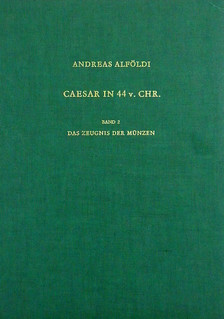

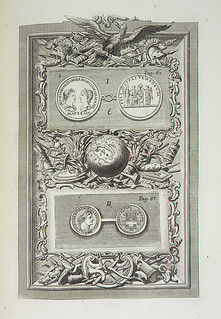
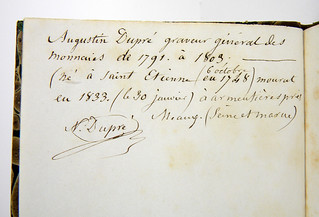
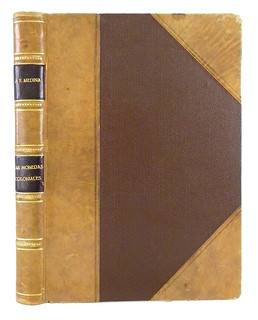
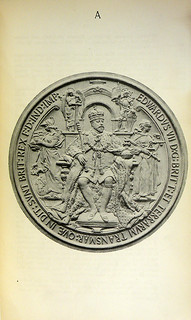
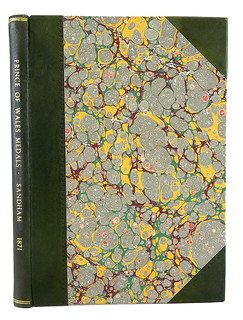
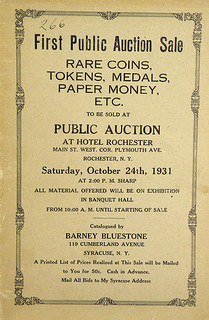
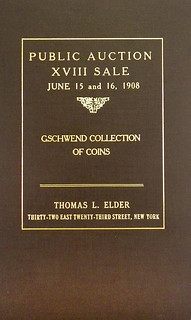

ANS 2017 SUMMER BOOK SALE
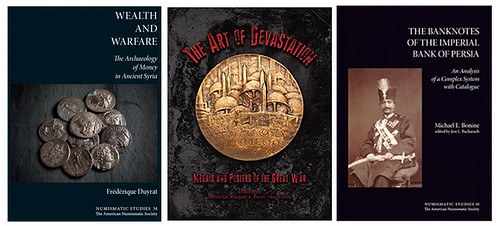

JOHN SPRING (1934-2017)
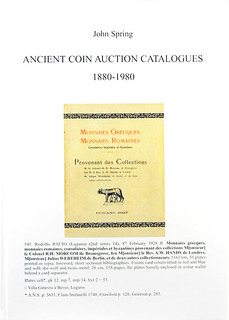 Over the years, John Spring and I both attended a
number of major European numismatic literature
auctions. While on these adventures, John was
renowned for locating and staying at the very
cheapest hotel room or hostel he could find. I think it
was a game with him. This was in stark contrast to his
general nature: unfailingly cheerful and courteous and
generous. John was a truly fine human being. Often
he would incorporate a hiking trip into his itinerary
but—more importantly for ancient coin and
numismatic literature aficionados—John also visited
and researched most of the libraries of the major
European coin firms.
Over the years, John Spring and I both attended a
number of major European numismatic literature
auctions. While on these adventures, John was
renowned for locating and staying at the very
cheapest hotel room or hostel he could find. I think it
was a game with him. This was in stark contrast to his
general nature: unfailingly cheerful and courteous and
generous. John was a truly fine human being. Often
he would incorporate a hiking trip into his itinerary
but—more importantly for ancient coin and
numismatic literature aficionados—John also visited
and researched most of the libraries of the major
European coin firms.
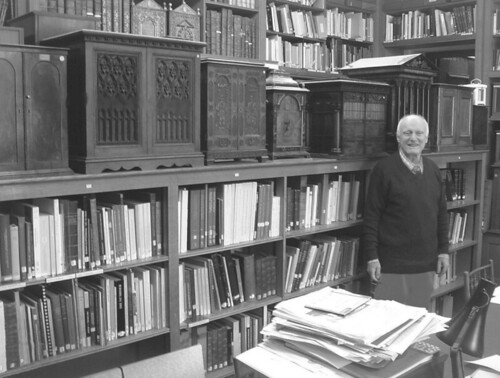
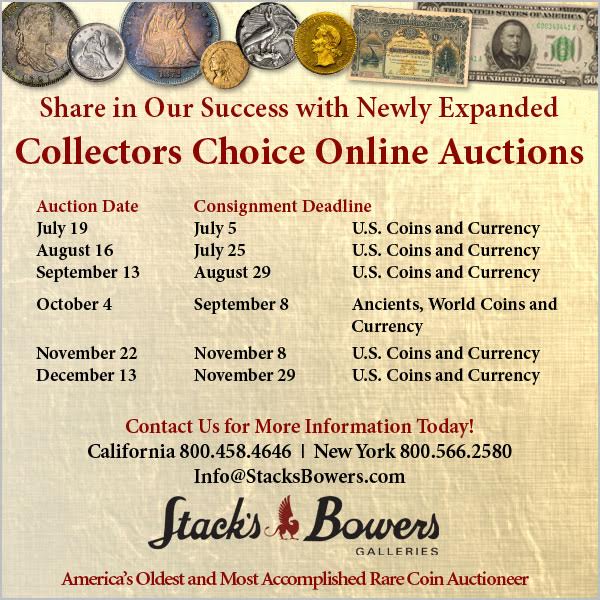
CONTEMPORARY 1792 MINT ACT PUBLICATION DIGITIZED
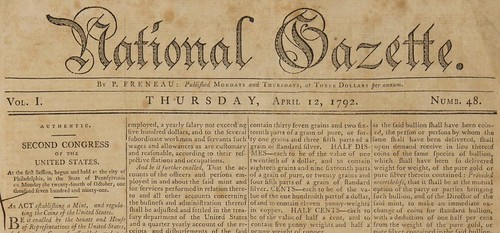
https://nnp.wustl.edu/library/book/532389
MERCHANT'S MAGAZINE NOW ON NEWMAN PORTAL
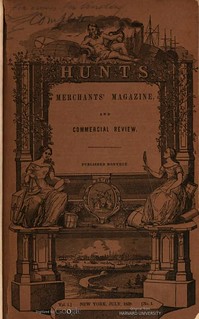 Freeman Hunt's Merchant's Magazine and Commercial Review (1839-1870) was an important source of American economic, banking, and trade news in the mid-19th century. Numismatic tidbits are scattered about and are best found through text search. Users can search specifically within this periodical through the Newman Portal advanced search, by entering “Merchant's” in the “Title” field and the search word or phrase in the “Search” field. A search on “Mint” for the year 1853, for example, reveals some of the thought that went into the Mint Act of 1853, which slightly reduced the weight of the silver coinage. Prior to this, silver coinage was overweight with respect to gold, and Congress wished to restore circulating parity:
Freeman Hunt's Merchant's Magazine and Commercial Review (1839-1870) was an important source of American economic, banking, and trade news in the mid-19th century. Numismatic tidbits are scattered about and are best found through text search. Users can search specifically within this periodical through the Newman Portal advanced search, by entering “Merchant's” in the “Title” field and the search word or phrase in the “Search” field. A search on “Mint” for the year 1853, for example, reveals some of the thought that went into the Mint Act of 1853, which slightly reduced the weight of the silver coinage. Prior to this, silver coinage was overweight with respect to gold, and Congress wished to restore circulating parity:
https://nnp.wustl.edu/library/publisherdetail/520455
https://nnp.wustl.edu/Library/AdvancedSearchForm
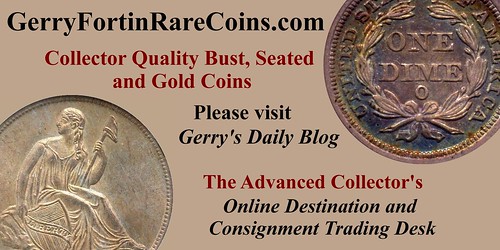
MORE ON THE HELFENSTEIN SALE PHOTO
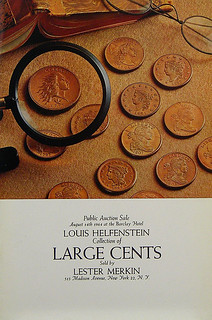 Regarding the Lester Merkin photo cover for the Helfenstein Sale, I have an original negative for the Large Cent cover which I believe is different from the one Charlie Davis used for his copies and the one used for the photo in the Champa part one sale, lot 409. The print in the Champa sale was 19 1/2 " by 15 1/2 ", and does not completely illustrate the 1798 Cent far right. Also, only a small part of the bracket on the left holding the magnifying glass is seen. The 20" by 24" photo produced by Charlie Davis has a wider image and does include more of the 1798 Cent on the right and the magnifying glass bracket on the left.
Regarding the Lester Merkin photo cover for the Helfenstein Sale, I have an original negative for the Large Cent cover which I believe is different from the one Charlie Davis used for his copies and the one used for the photo in the Champa part one sale, lot 409. The print in the Champa sale was 19 1/2 " by 15 1/2 ", and does not completely illustrate the 1798 Cent far right. Also, only a small part of the bracket on the left holding the magnifying glass is seen. The 20" by 24" photo produced by Charlie Davis has a wider image and does include more of the 1798 Cent on the right and the magnifying glass bracket on the left.
It is thanks to collectors like Dan and dealers like Charlie and their zeal for numismatic literature and ephemera that those negatives were spared the fate of being consigned to a dumpster, and collectors forty (or four hundred) years in the future will be able to share our delight in the image.
I still have that photo Dan sent.
Because it's easier than digging it out and scanning it, below is an image of Charlie Davis' version of the print, with an inset showing how it is cropped for the color photo.
-Editor
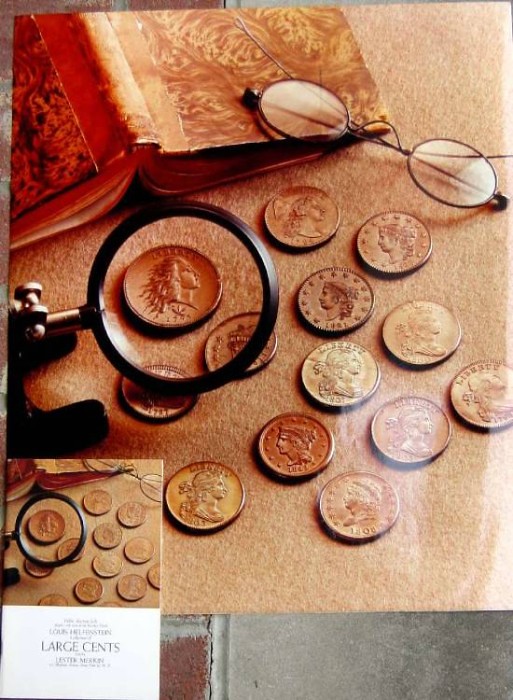
Merkin: Color Photograph, 20x24", of the Louis Helfenstein Collection of Large Cents
(https://www.vcoins.com/cn/stores/charles_davis/44/product/
merkin_color_photograph_20x24_of_the_louis_helfenstein
_collection_of_large_cents/106784/Default.aspx)
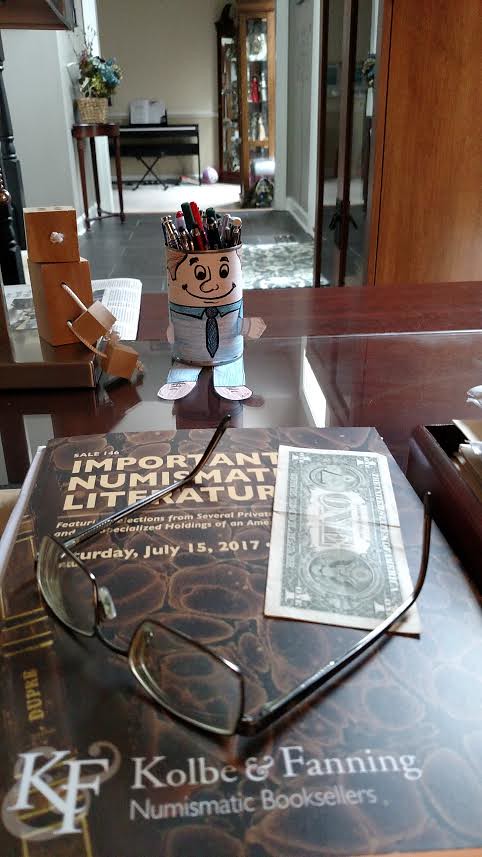
THE HELFENSTEIN LARGE CENT SALE COVER PHOTO
(http://www.coinbooks.org/v20/esylum_v20n26a08.html)

NOTES FROM E-SYLUM READERS: July 5, 2017
Bruce Perdue forwarded this message from the Central States Numismatic Society:
Regarding the new ANA Edition of The E-Sylum,
Harvey Stack writes:
ANA ANNOUNCES E-SYLUM COLLABORATION
(http://www.coinbooks.org/v20/esylum_v20n26a02.html)
Regarding scanning material for research and other uses,
Dave Bowers writes:
NEWMAN PORTAL UPDATE: JUNE 2017
(http://www.coinbooks.org/v20/esylum_v20n26a09.html)
Mike Hodder writes:
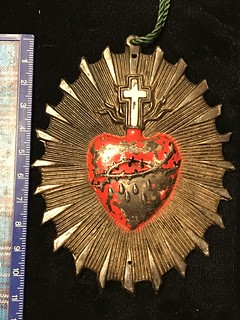 The medal described as possibly a previously unknown Canadian or Jesuit Indian Peace medal is nothing more than a Catholic Sacred Heart of Jesus devotional piece. Christ's heart is shown surrounded by the crown of thorns of the Passion and is aflame with his love for mankind. So the iconography is described by the Sisters of Carmel. Medals of the same general design can be bought in any Catholic religious store and online from scores of sites. I do not think the piece shown is particularly old.
The medal described as possibly a previously unknown Canadian or Jesuit Indian Peace medal is nothing more than a Catholic Sacred Heart of Jesus devotional piece. Christ's heart is shown surrounded by the crown of thorns of the Passion and is aflame with his love for mankind. So the iconography is described by the Sisters of Carmel. Medals of the same general design can be bought in any Catholic religious store and online from scores of sites. I do not think the piece shown is particularly old.
THE SACRED HEART OF JESUS MEDAL
(http://www.coinbooks.org/v20/esylum_v20n26a13.html)
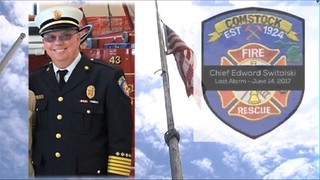
Memorial coins honor fallen fire chief
(http://wwmt.com/news/local/memorial-coins-honor-fallen-fire-chief)
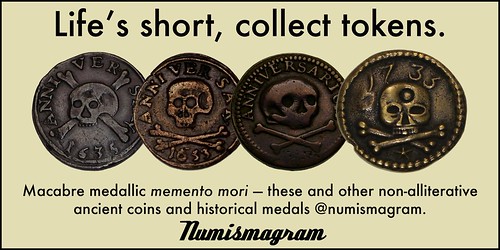
MORE ON THE MORMON DESERET ALPHABET
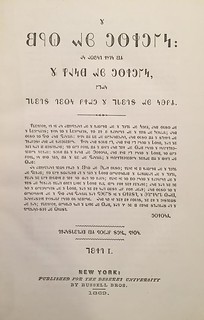 The piece on the Deseret alphabet developed by the Mormons in the 19th century caught my eye. As some of my friends know, Mormon history is an interest of mine, and I own copies of three of the four books printed in Deseret. In the photo attached are The Deseret First Book and The Deseret Second Book (both published in 1868) flanking a Deseret printing of Nephi I (the first book in the Book of Mormon), printed in 1869. They are propped up by a volume probably more familiar to most of our readers! I'm also attaching a shot of the title page of Nephi I.
The piece on the Deseret alphabet developed by the Mormons in the 19th century caught my eye. As some of my friends know, Mormon history is an interest of mine, and I own copies of three of the four books printed in Deseret. In the photo attached are The Deseret First Book and The Deseret Second Book (both published in 1868) flanking a Deseret printing of Nephi I (the first book in the Book of Mormon), printed in 1869. They are propped up by a volume probably more familiar to most of our readers! I'm also attaching a shot of the title page of Nephi I.
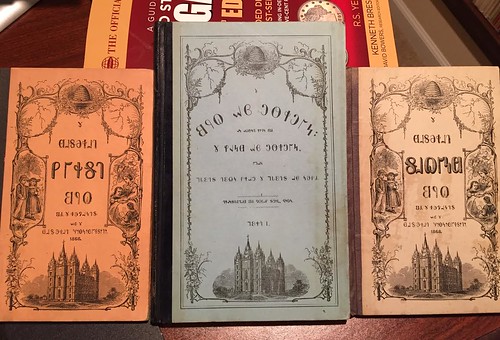
THE MORMON DESERET ALPHABET
(http://www.coinbooks.org/v20/esylum_v20n26a14.html)
VOCABULARY TERM: FORMULATION
CLASS 06.1

AUGUSTUS CHARLES GRUHLKE (1850-1935)

![]() About 1875 he built a small restaurant opposite the passenger station on Lincoln Street. However, it wasn't until April 1889 that he had running water.
About 1875 he built a small restaurant opposite the passenger station on Lincoln Street. However, it wasn't until April 1889 that he had running water.
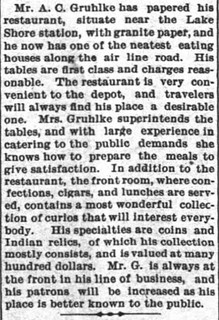 Gruhlke's restaurant featured in the local newspaper reports the front room has his coin and curiosity collections on display. (The Waterloo Press, Thursday, September 29, 1892, page 1).
Gruhlke's restaurant featured in the local newspaper reports the front room has his coin and curiosity collections on display. (The Waterloo Press, Thursday, September 29, 1892, page 1).
GRUHLKE, AUGUSTUS CHARLES
(https://sites.google.com/a/numismaticmall.com/www/numismaticmall-com/gruhlke-augustus-charles)
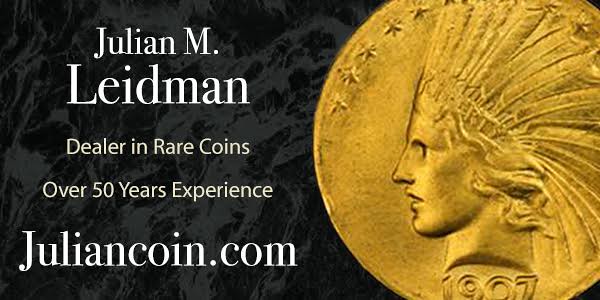
MAJOR GENERAL BROWN'S DAVIS FLIGHT MEDAL
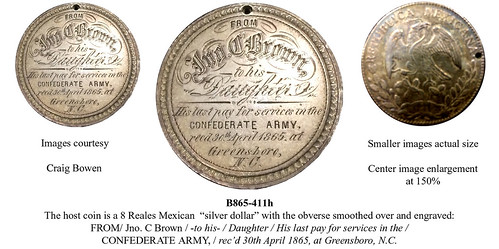
QUERY: ENGRAVED CONFEDERATE CAMP MARION COIN INFO SOUGHT
(http://www.coinbooks.org/esylum_v17n13a15.html)
MORE ON ENGRAVED CONFEDERATE DAVIS FLIGHT MEDALS
(http://www.coinbooks.org/esylum_v17n15a21.html)
ALAN WEINBERG ON DAVIS FLIGHT MEDALS
(http://www.coinbooks.org/esylum_v17n16a20.html)
PETER BERTRAM ON DAVIS FLIGHT MEDALS
(http://www.coinbooks.org/esylum_v17n17a12.html)
MORE ON KENT WHITING'S DAVIS FLIGHT MEDAL
(http://www.coinbooks.org/esylum_v17n47a14.html)
THE LAST DAYS OF THE CONFEDERATE TREASURY
(http://www.coinbooks.org/esylum_v17n48a10.html)
1896 ARGENTUM UNIVERSALE ONE TALENT LOCATED
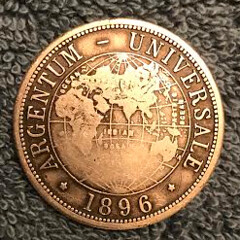

I reached out to Tom DeLorey, who didn't have any new information. Tom notes that this example "looks like somebody's pocket piece." The wear is unfortunate.

Private Coinage Proposal
QUERY: 1896 ARGENTUM UNIVERSALE ISSUE
(http://www.coinbooks.org/v20/esylum_v20n10a29.html)

ARTICLE HIGHLIGHTS HISTORIC COIN PRESS NO. 1
Coin Press No. 1 claims spot in Nevada history
(http://www.nevadaappeal.com/news/opinion/coin-press-no-1-claims-spot-in-nevada-history/)
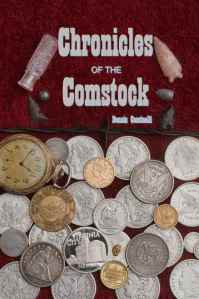 The Northern Nevada region known as the Comstock encapsulated the true pioneer spirit of the rugged Old West. A source of tremendous wealth thanks to rich deposits of gold and silver, the Comstock boomed in the mid-1800s and spurred thriving communities, bountiful railroads and a hearty breed of pioneers who called the Comstock their home.
The Northern Nevada region known as the Comstock encapsulated the true pioneer spirit of the rugged Old West. A source of tremendous wealth thanks to rich deposits of gold and silver, the Comstock boomed in the mid-1800s and spurred thriving communities, bountiful railroads and a hearty breed of pioneers who called the Comstock their home.
Hardcover: $24
Paperback: $22
Hardcover ISBN: 978-0-615-39249-3
Softcover ISBN: 978-0-615-37661-5
https://denniscassinelli.com/books/
MEDAL STRUCK ON CARSON CITY COIN PRESS NO. 1
(http://www.coinbooks.org/esylum_v07n16a19.html)
CARSON CITY MINT STRIKES RAILROAD "COIN"
(http://www.coinbooks.org/esylum_v08n46a17.html)
CARSON CITY MINT PRESS #1 STRIKES NEW MEDALS
(http://www.coinbooks.org/esylum_v10n40a23.html)
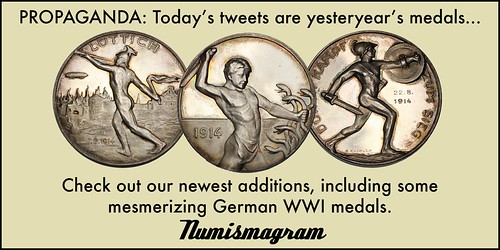
REGINA COIN SHOW TO FEATURE ARCTIC MEDAL
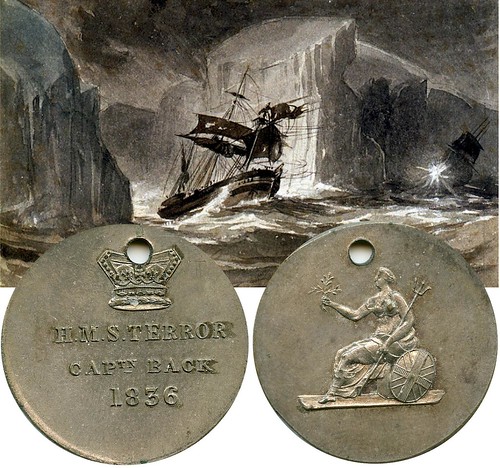
http://www.reginacoinclub.com/
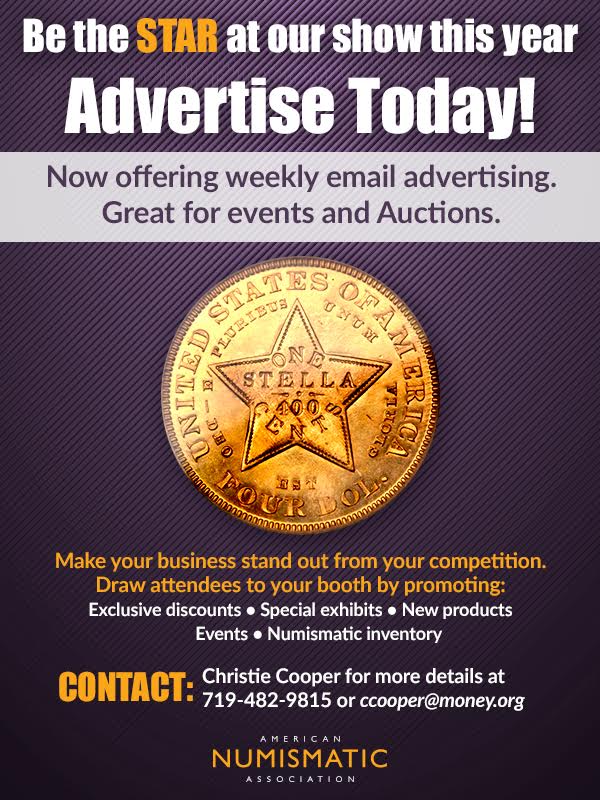
NUMISMATIC NUGGETS: July 5, 2017
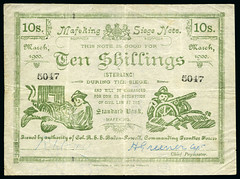
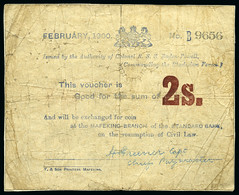
Mafeking Siege 10s banknote and 2s voucher
(https://www.davidfeldman.com/auctions/browse-lots/aucP/2017-british-empire-auction/item/293575/)
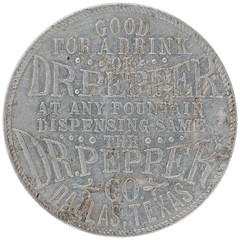
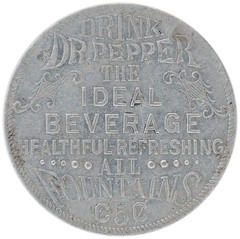
DR. PEPPER C. 1900 "GOOD FOR A DRINK" TOKEN FROM DALLAS, TEXAS.
(https://www.hakes.com/Auction/ItemDetail/212294/DR-PEPPER-C-1900-GOOD-FOR-A-DRINK-TOKEN-FROM-DALLAS-TEXAS)
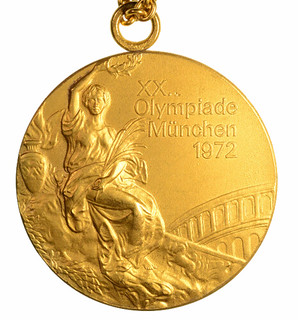
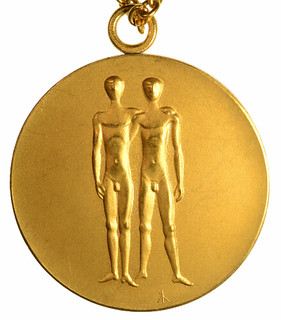
Cased Gold First Place Winner's Medal Awarded for Swimming, 400m metre individual medley event.
(https://www.davidfeldman.com/auctions/browse-lots/aucP/2017-summer-auction-series/item/292999/)
HERITAGE OFFERS OLGA KORBUT'S OLYMPIC MEDALS
(http://www.coinbooks.org/v20/esylum_v20n07a25.html)

ANCIENT ARCHITECTURE THROUGH COINAGE
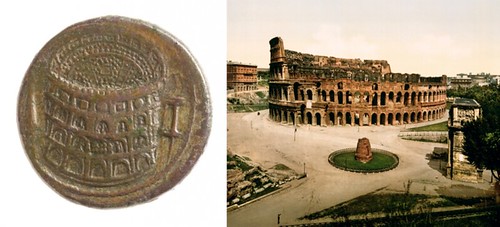
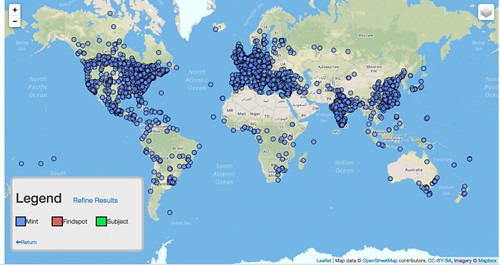
Explore Ancient Architecture Through Coinage In This Gigantic Coin Database
(https://www.forbes.com/sites/drsarahbond/2017/06/16/explore-ancient-architecture-through-coinage-in-this-gigantic-coin-database/amp/)
METAL DETECTORISTS AND ARCHAEOLOGISTS
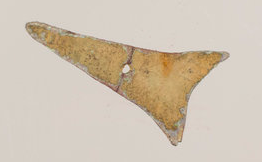 Keith Wille was metal detecting in the woods of Connecticut a few years ago when he found a triangle of brass about two-and-a-half inches long with a small hole in the middle. He thought little of the find at first, and threw it in his scrap pile. Mr. Wille, 29, is a manager at a survival training company, but spends most of his spare time metal detecting.
Keith Wille was metal detecting in the woods of Connecticut a few years ago when he found a triangle of brass about two-and-a-half inches long with a small hole in the middle. He thought little of the find at first, and threw it in his scrap pile. Mr. Wille, 29, is a manager at a survival training company, but spends most of his spare time metal detecting.
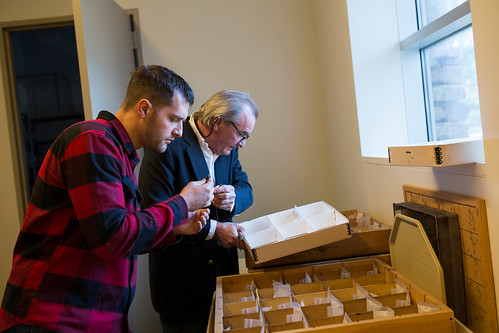
Keith Wille with the archaeologist Kevin McBride
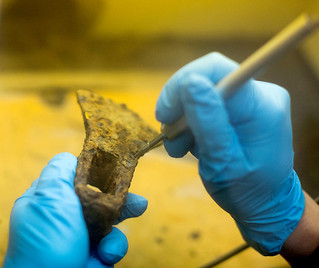 At first Dr. McBride and Mr. Naumec tried to do some metal-detecting themselves on the battlefield in 2008. “We figured it wasn't rocket science,” he said. But they learned that while it's not hard to find a dime lying on the floor, it takes years of practice to recognize the sound of a musket ball eight inches underground and then determine its provenance.
At first Dr. McBride and Mr. Naumec tried to do some metal-detecting themselves on the battlefield in 2008. “We figured it wasn't rocket science,” he said. But they learned that while it's not hard to find a dime lying on the floor, it takes years of practice to recognize the sound of a musket ball eight inches underground and then determine its provenance.
Metal Detectorists Help Archaeologists Dig Up a Secret History
(https://www.nytimes.com/2017/01/16/science/archaeology-metal-detectorists-pequot.html)

CANADA'S LOON DOLLAR TURNS THIRTY
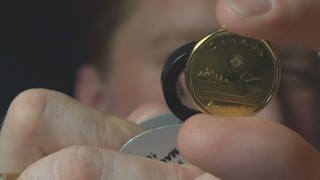 Thirty years ago today the loonie made its first clanking appearance in cash registers, pockets and purses across Canada.
Thirty years ago today the loonie made its first clanking appearance in cash registers, pockets and purses across Canada.
From suspicion to pride: Canada's beloved loonie turns 30
(http://www.cbc.ca/news/business/loonie-canada-dollar-30-years-1.4184788)
1775 LOUIS XV CANADIAN INDIAN PEACE MEDAL

CANADIAN INDIAN TREATY MEDALS AND THE SESQUICENTENNIAL OF CONFEDERATION
(http://numismatics.org/pocketchange/treatymedals/)
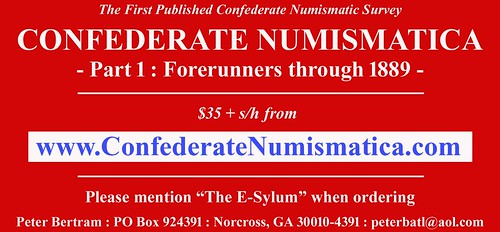
ROYAL MINT COMMEMORATES PISTRUCCI'S 1817 DESIGN
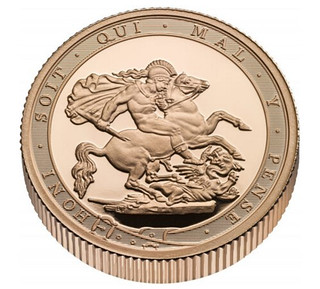 One of the new anniversary issues, a piedfort sovereign coin, is the first of its kind. Piedfort coins—which are simply double thickness in their specifications—originate from France and were first seen in the 12th century. Their name, translated to English, means “heavy measure.”
One of the new anniversary issues, a piedfort sovereign coin, is the first of its kind. Piedfort coins—which are simply double thickness in their specifications—originate from France and were first seen in the 12th century. Their name, translated to English, means “heavy measure.”
United Kingdom: First-of-its-kind piedfort gold sovereign celebrates 200th anniversary of iconic coin
(http://news.coinupdate.com/united-kingdom-first-of-its-kind-piedfort-gold-sovereign-celebrates-200th-anniversary-of-iconic-coin/)
‘UNA AND THE LION' PROOF SET OFFERED
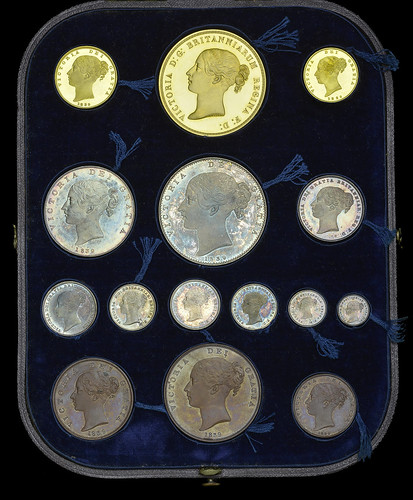
https://www.dnw.co.uk/
SIGMUND FREUD IN NUMISMATICS
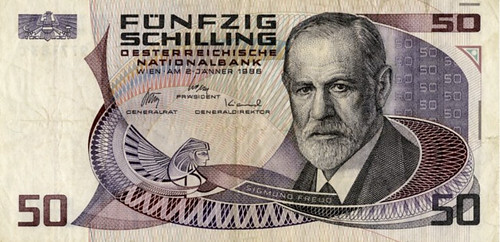
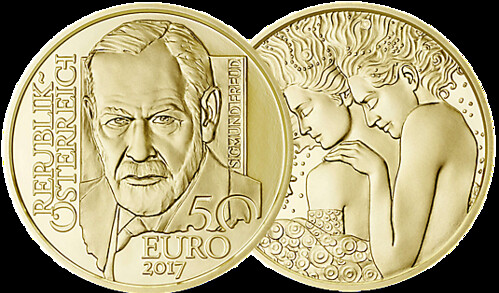

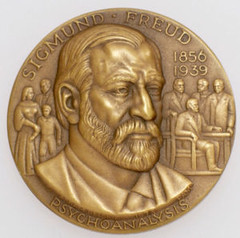

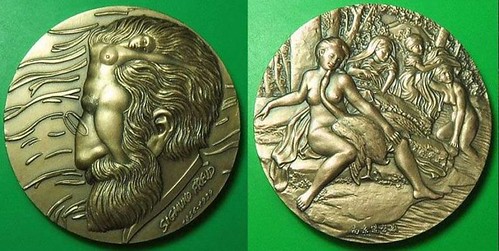
The Numismatic Sigmund Freud
(http://fourthgarrideb.com/2017/06/the-numismatic-sigmund-freud/)
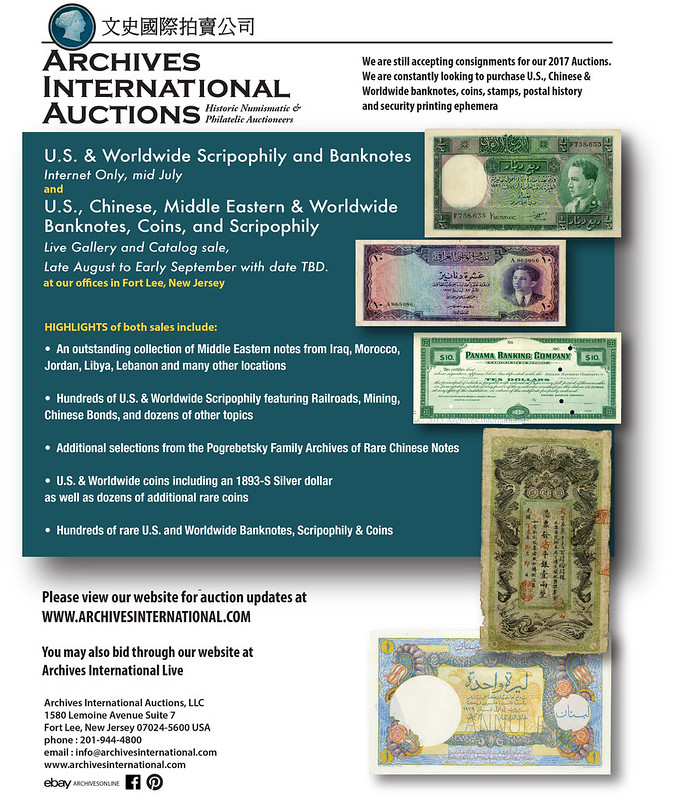
QUEEN VICTORIA'S DIAMOND JUBILEE MEDAL

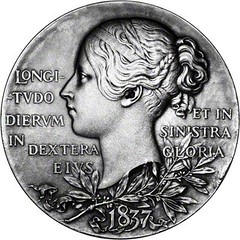
Queen Victoria's Diamond Jubilee Medal
(http://fourthgarrideb.com/2017/06/queen-victorias-diamond-jubilee-medal/)
ROYAL MINT BUYS RARE COIN DEALERSHIP STAKE
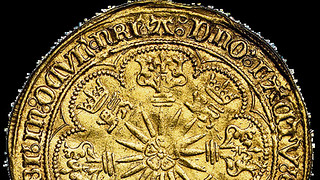 The Royal Mint has bought a minority stake in a coin dealership in Mayfair as it seeks to expand its growing interest in the market for old currency.
The Royal Mint has bought a minority stake in a coin dealership in Mayfair as it seeks to expand its growing interest in the market for old currency.
Royal Mint buys minority stake in coin dealership Sovereign Rarities
(https://www.thetimes.co.uk/article/royal-mint-buys-minority-stake-in-coin-dealership-sovereign-rarities-3798phg0z)
Here's some more information from The Telegraph, published June 30, 2017.
-Editor
Do you have a rare coin in your collection? The Royal Mint could soon start offering valuations
(http://www.telegraph.co.uk/business/2017/06/30/do-have-rare-coin-collection-royal-mint-could-soon-start-offering/)

DE LA RUE CREATIVE DIRECTOR JULIAN PAYNE
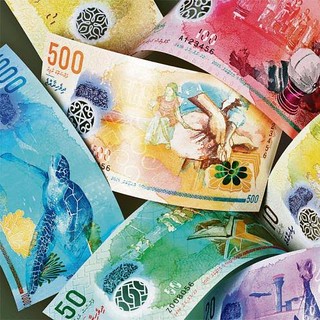 Julian Payne carries a lot of funny money. The 42-year-old turns up to our meeting armed with wads of bank notes that look like they may have come from a surreal edition of Monopoly.
Julian Payne carries a lot of funny money. The 42-year-old turns up to our meeting armed with wads of bank notes that look like they may have come from a surreal edition of Monopoly.
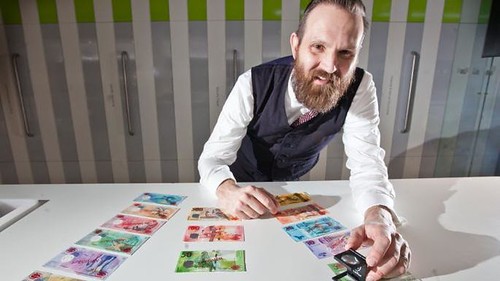
Take note of the world's leading money maker
(https://www.thetimes.co.uk/article/take-note-of-the-worlds-leading-money-maker-f3387wr7q)
LOCAL CURRENCY NAMED FOR COUNTERFEITER FARINET
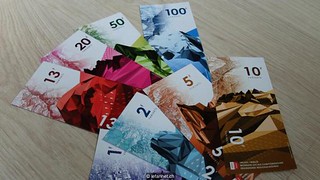 In May 2017, a group of Valais residents launched a new regional currency. Like the UK's Bristol pound and the the Franco-Spanish Basque region's Eusko, it's a complementary rather than replacement currency. Its banknotes are worth the same as Swiss francs – the country's official currency – but can only be spent in participating businesses in the Valais, which so far includes more than 150 restaurants, artisans, farm shops and wineries.
In May 2017, a group of Valais residents launched a new regional currency. Like the UK's Bristol pound and the the Franco-Spanish Basque region's Eusko, it's a complementary rather than replacement currency. Its banknotes are worth the same as Swiss francs – the country's official currency – but can only be spent in participating businesses in the Valais, which so far includes more than 150 restaurants, artisans, farm shops and wineries.
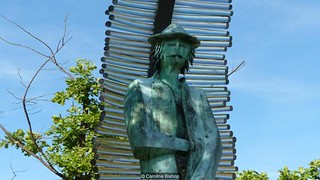 After fleeing from authorities in his native Italy where he was wanted on counterfeit charges, Farinet arrived in the Valais in 1869 and once again began minting fake money – specifically, 20 centime coins dated 1850. To court favour with the poverty-stricken locals, he was generous with his forged currency, in return gaining food, shelter and protection from the authorities who pursued him. In doing so, he not only evaded capture for many years but also liberated local people from debt, something that later earned him the nickname ‘Robin Hood of the Alps'.
After fleeing from authorities in his native Italy where he was wanted on counterfeit charges, Farinet arrived in the Valais in 1869 and once again began minting fake money – specifically, 20 centime coins dated 1850. To court favour with the poverty-stricken locals, he was generous with his forged currency, in return gaining food, shelter and protection from the authorities who pursued him. In doing so, he not only evaded capture for many years but also liberated local people from debt, something that later earned him the nickname ‘Robin Hood of the Alps'.
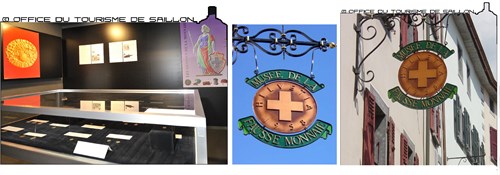
Museum of Counterfeit Money
The Criminal Who Inspired a New Currency
(http://www.bbc.com/travel/story/20170623-the-criminal-who-inspired-a-new-currency)
VICTORIA'S SECRET TURNS TABLES ON COUNTERFEITERS
Scammers Use Counterfeit Cash At Victoria's Secret, Get Upset When They Get Their Fake Money Back As Refund
(https://consumerist.com/2017/06/29/scammers-use-counterfeit-cash-at-victorias-secret-get-upset-when-they-get-fake-their-money-back-as-refund/)
"GOOD LUCK" COIN TOSS DELAYS FLIGHT FIVE HOURS
 Flights can be delayed for myriad reasons these days: Passenger scuffles. Disputes over a birthday cake. The birth of a baby on board. Gridlock has heard it all.
Flights can be delayed for myriad reasons these days: Passenger scuffles. Disputes over a birthday cake. The birth of a baby on board. Gridlock has heard it all.
 A senior flight mechanic told the news outlet that the crew members had been lucky, in a sense, that someone spotted the woman's actions and alerted crew members before the flight took off.
A senior flight mechanic told the news outlet that the crew members had been lucky, in a sense, that someone spotted the woman's actions and alerted crew members before the flight took off.
A woman threw coins at her plane for luck. One landed in the engine and caused a 5-hour delay.
(https://www.washingtonpost.com/news/dr-gridlock/wp/2017/06/28/a-woman-threw-coins-at-her-plane-for-luck-one-landed-in-the-engine-and-caused-a-5-hour-delay/)
Elderly flight passenger throws coins into engine for ‘luck', delays take-off for hours
(http://www.scmp.com/news/china/society/article/2100242/elderly-flight-passenger-throws-coins-engine-luck-delays-take)
FEATURED WEB SITE: USPATTERNS.COM
This week's Featured Web Site is uspatterns.com

http://uspatterns.com/

